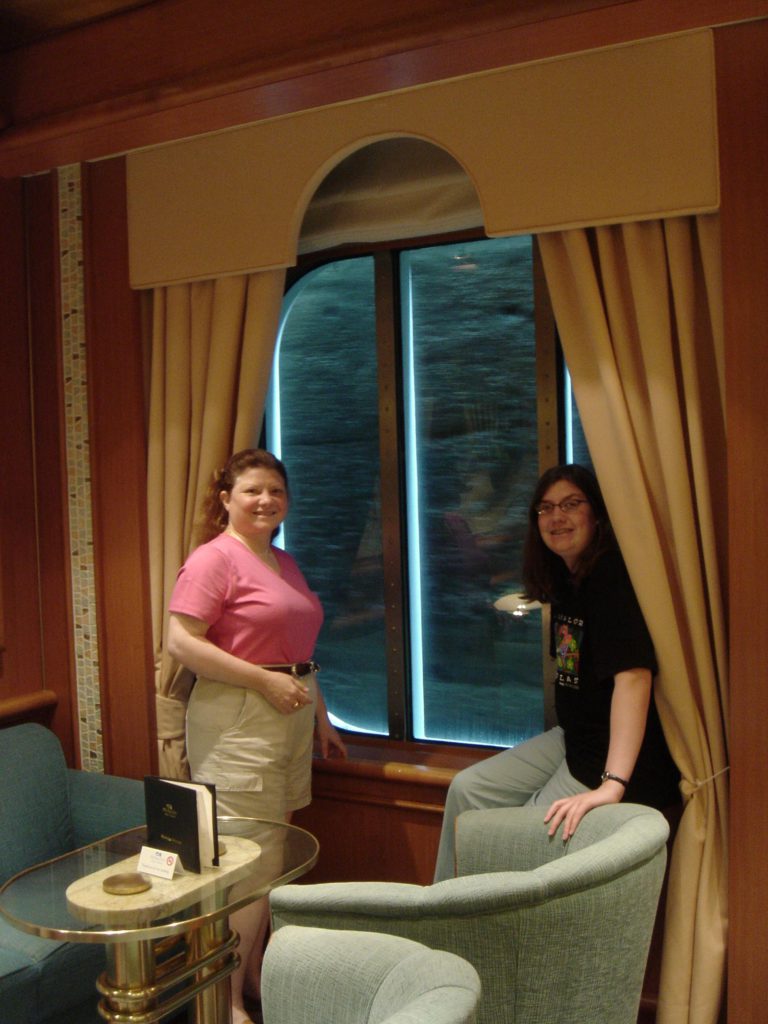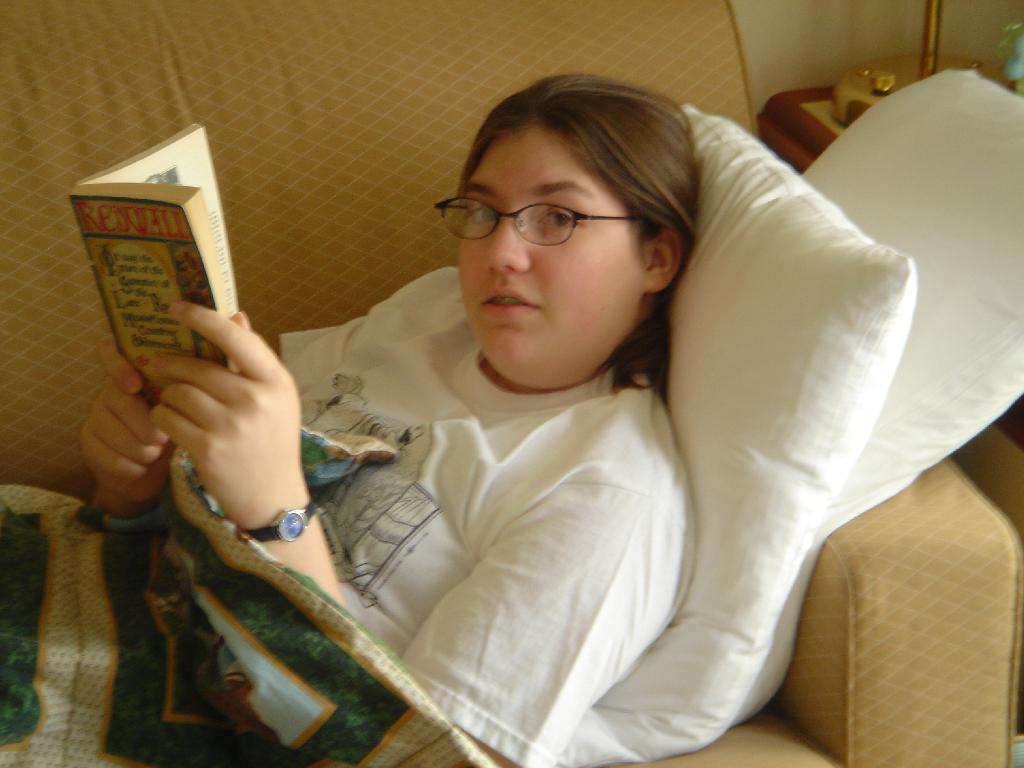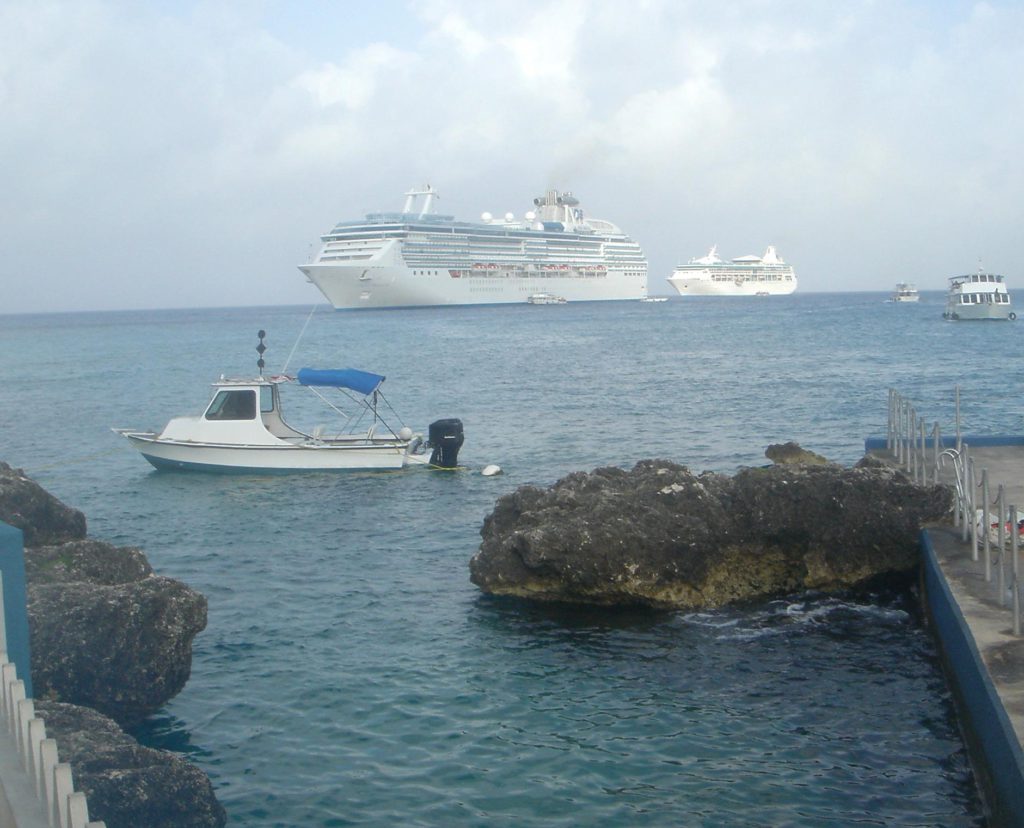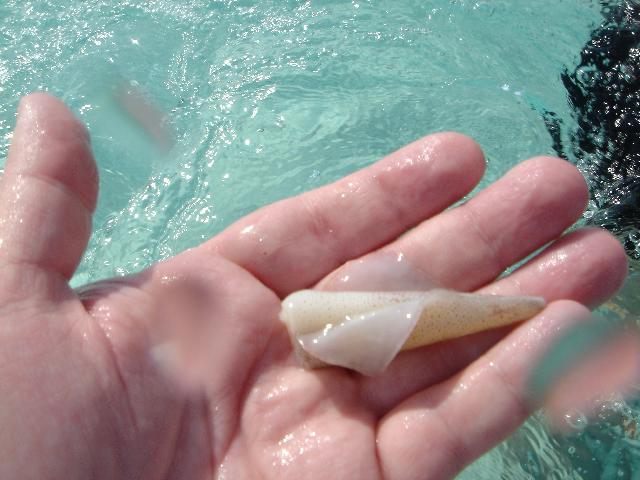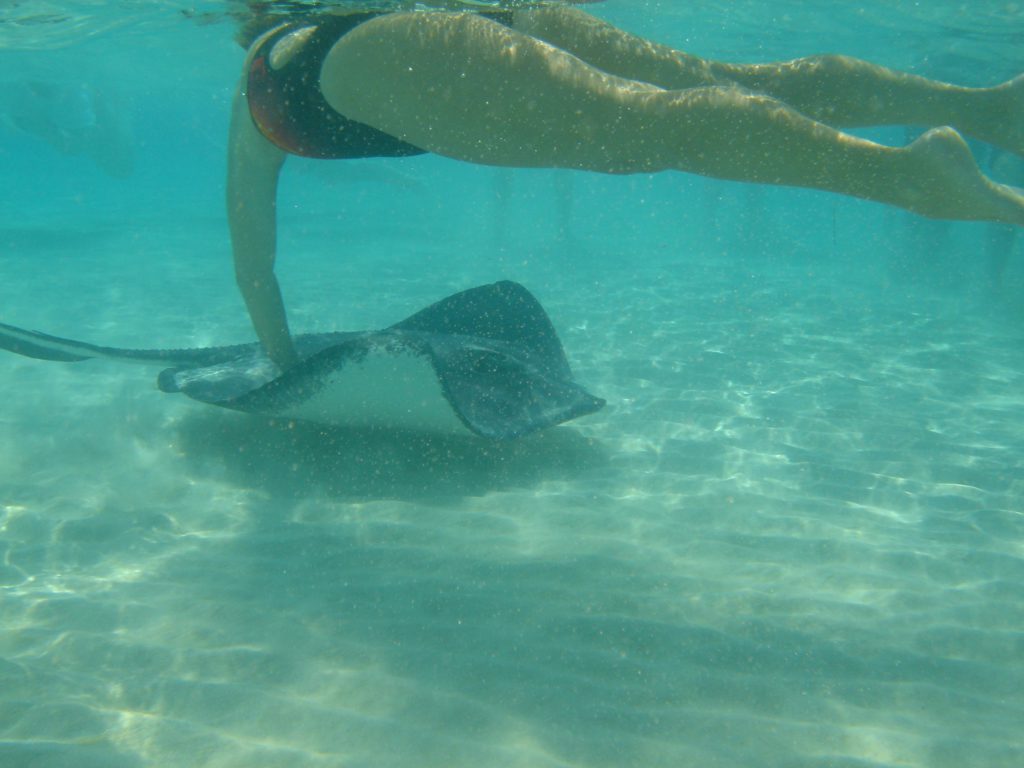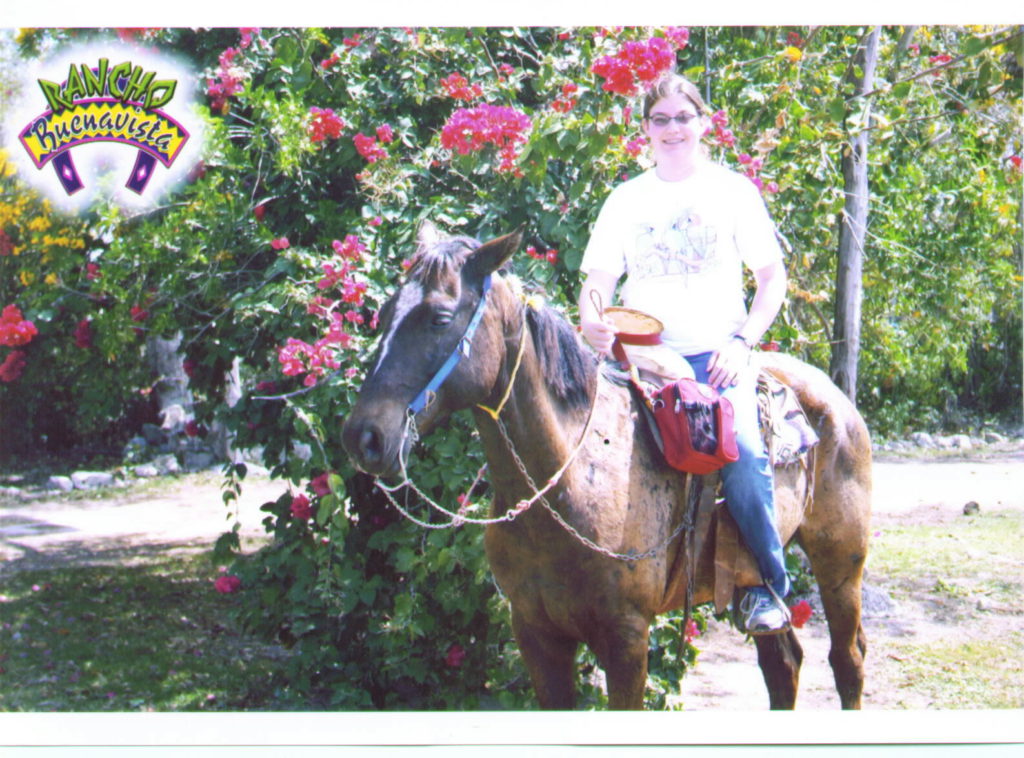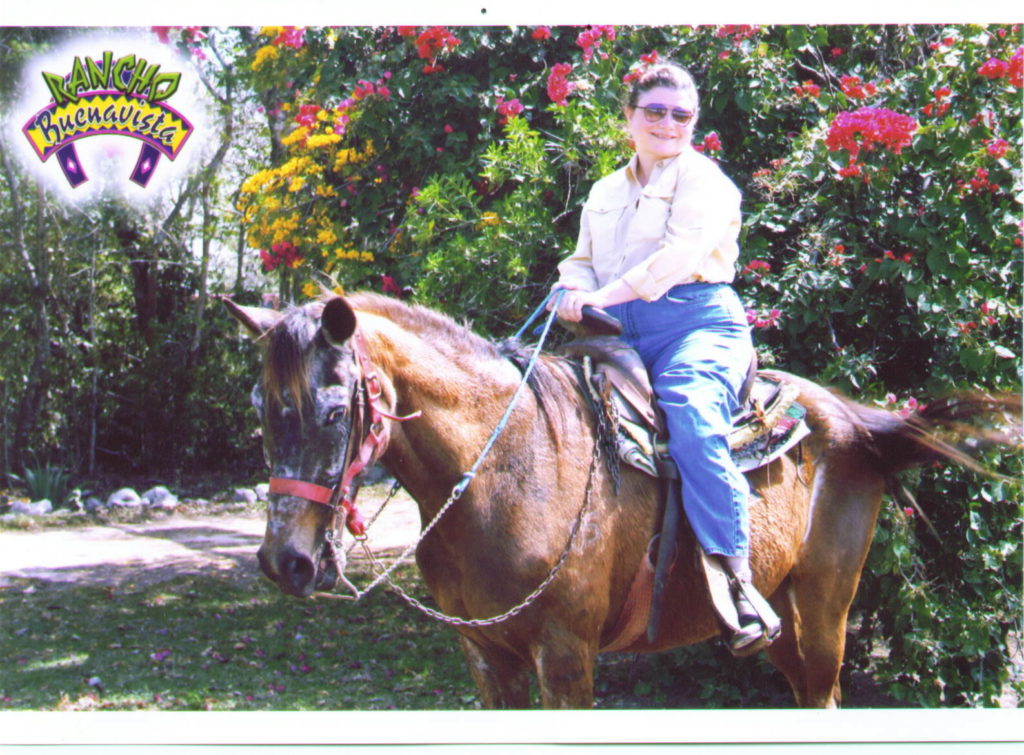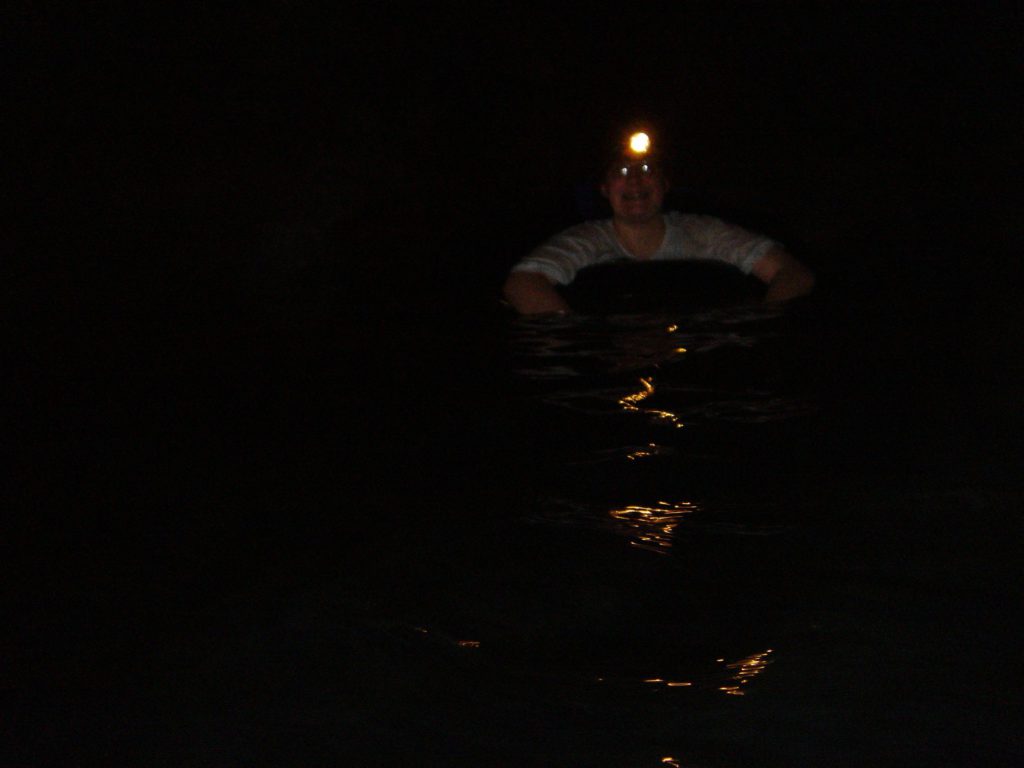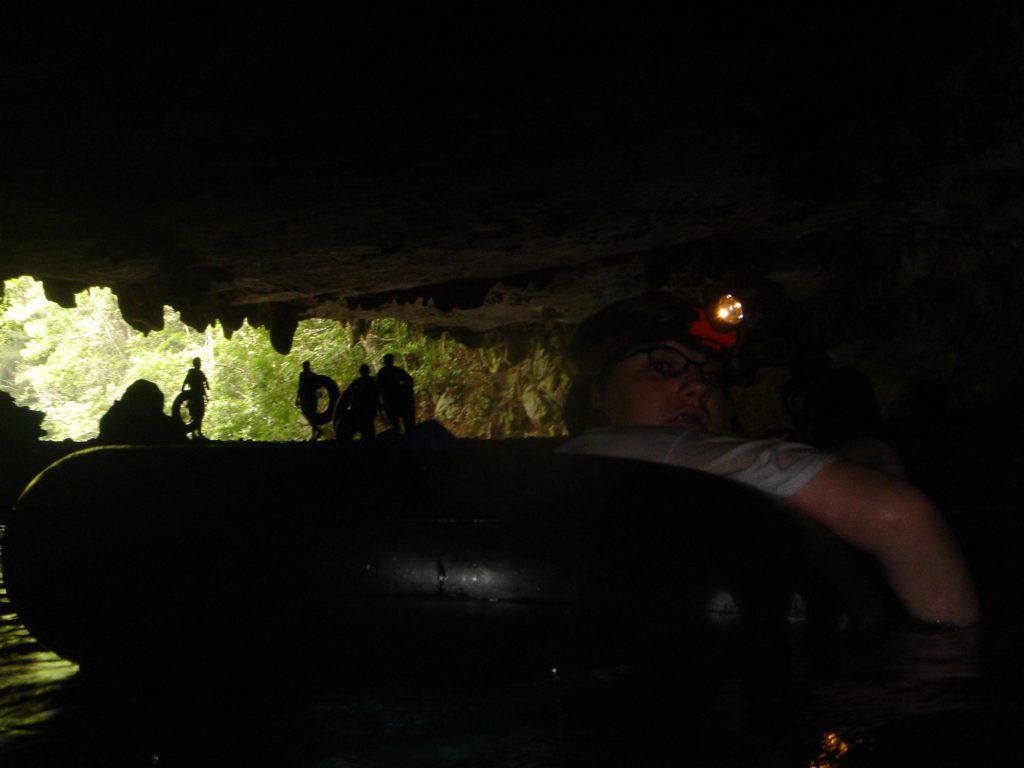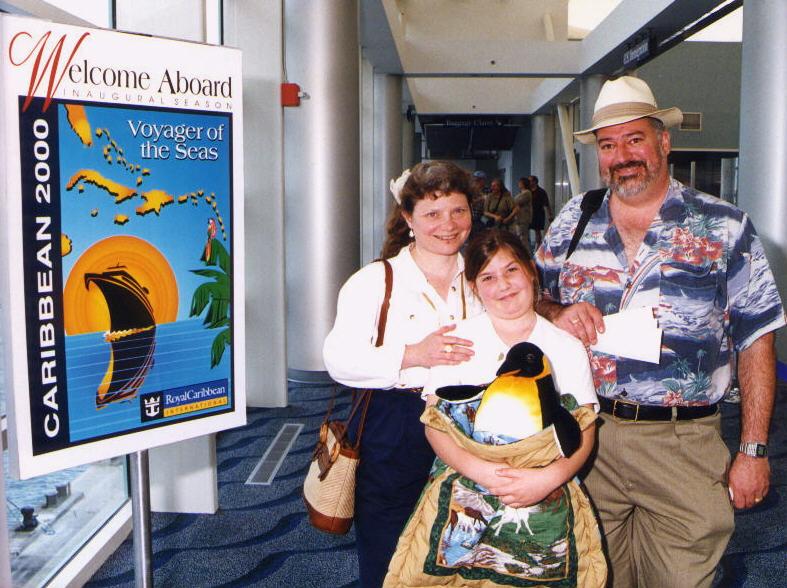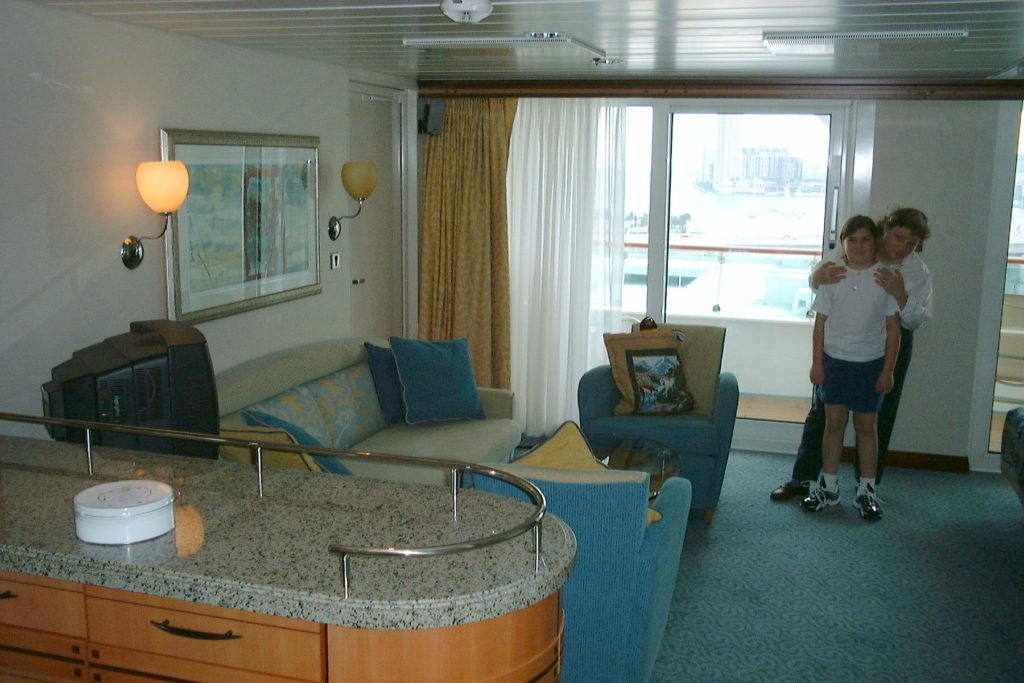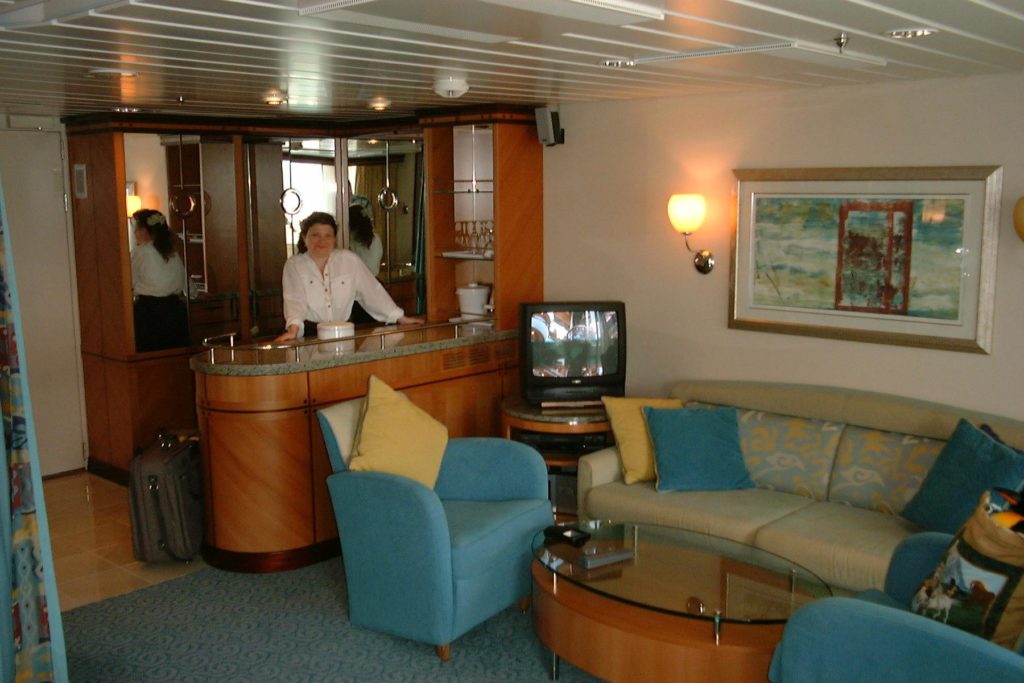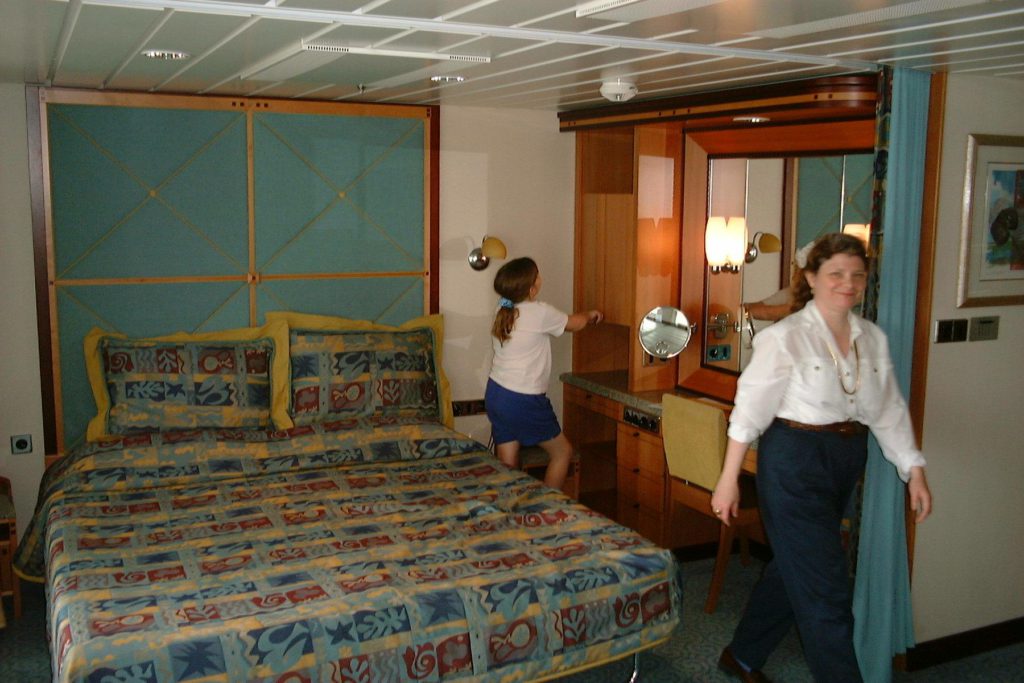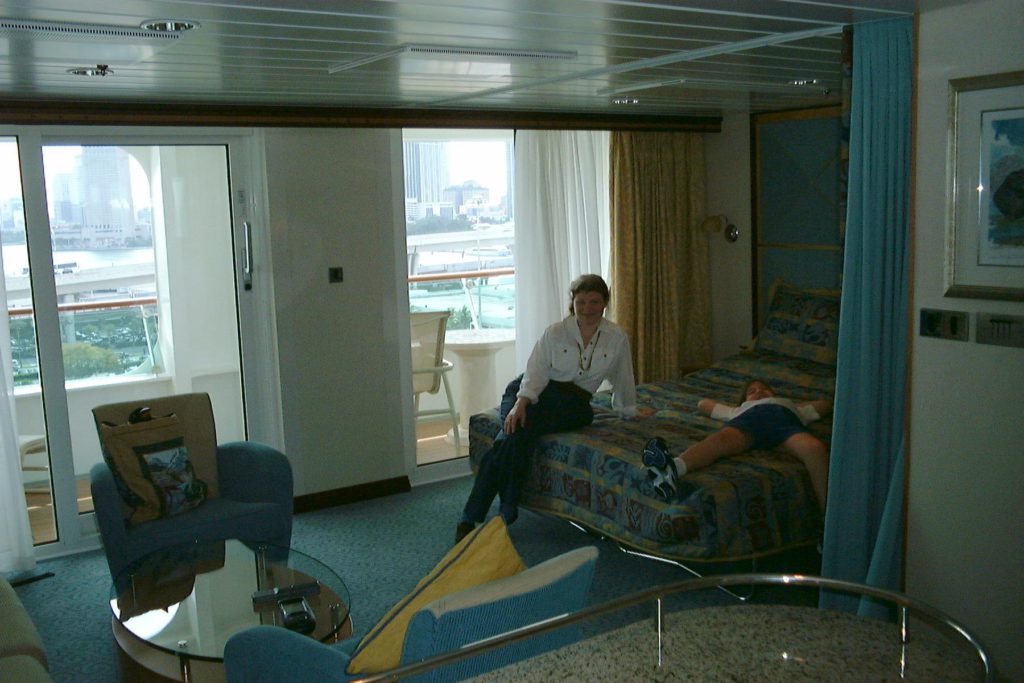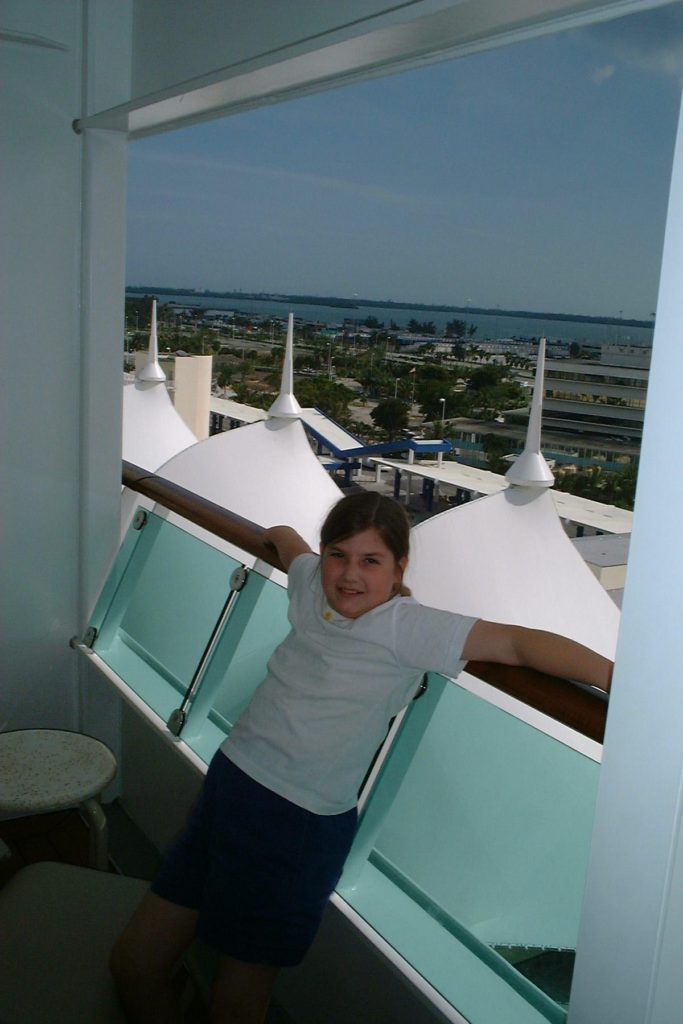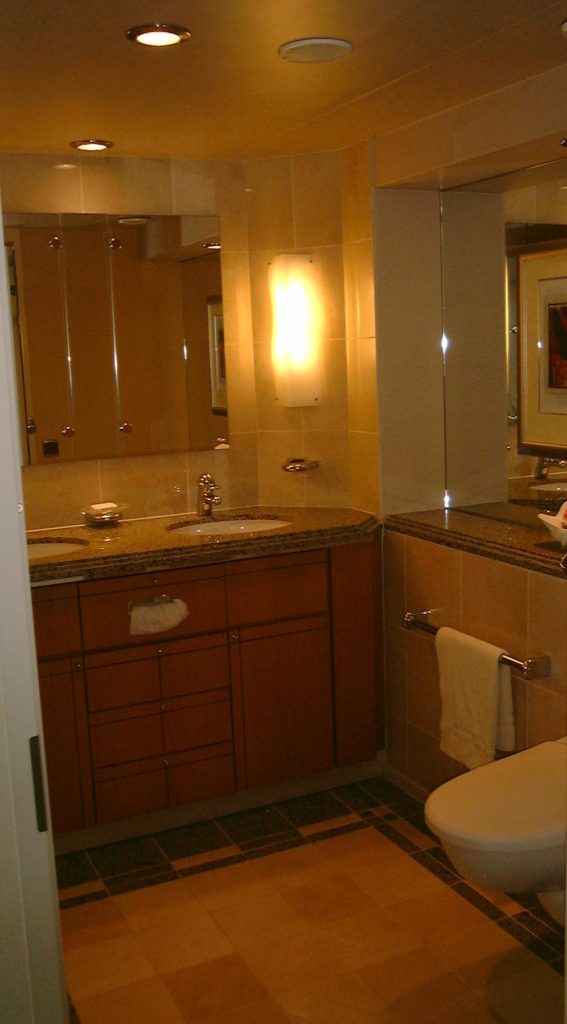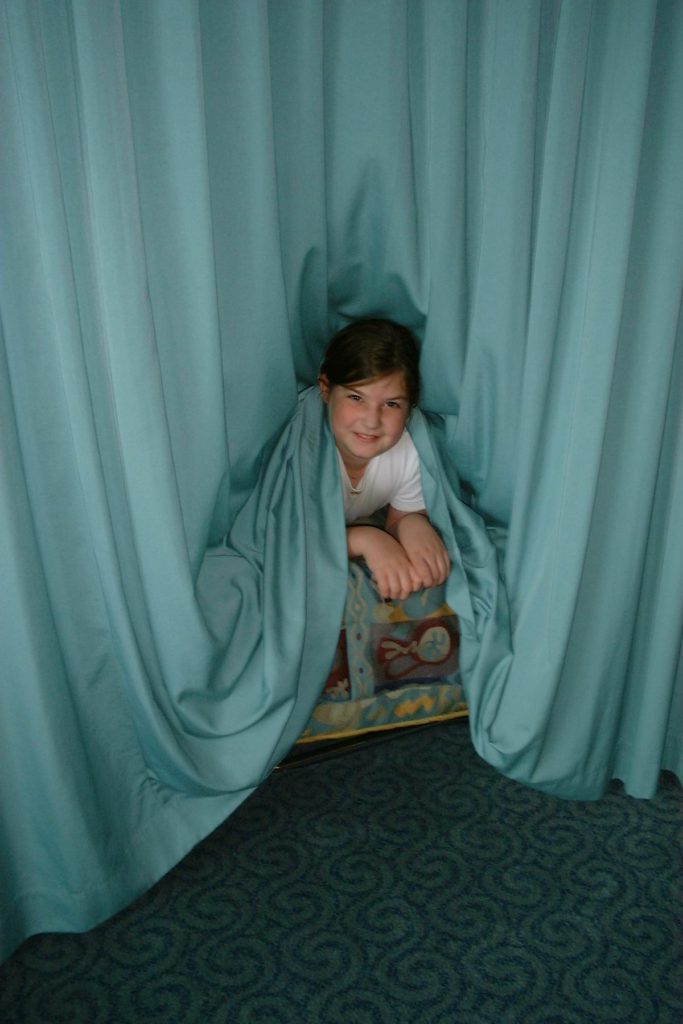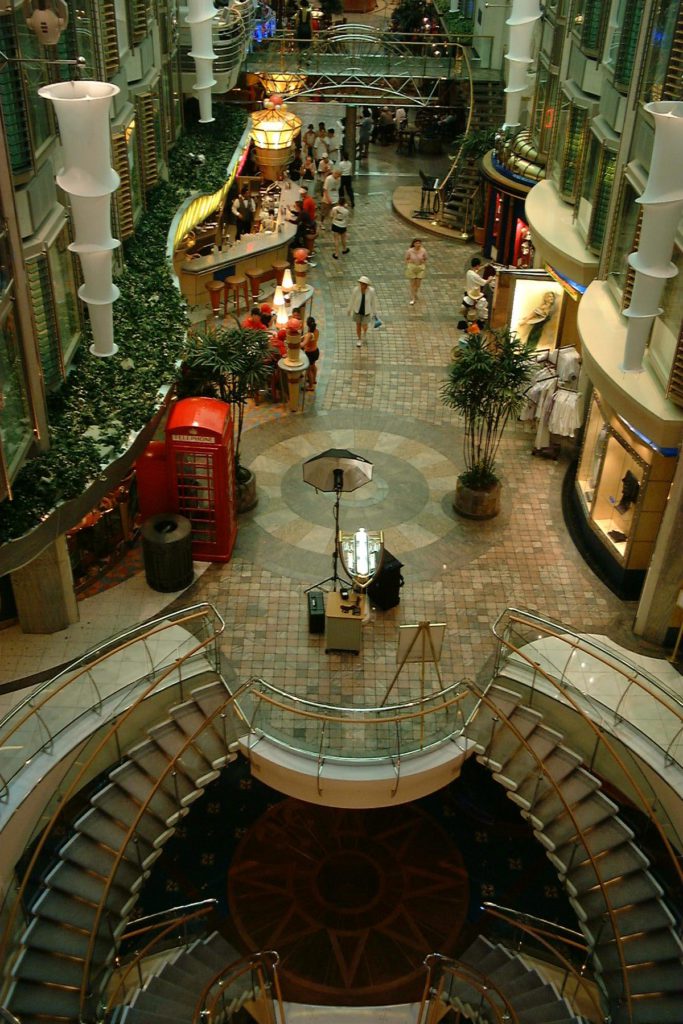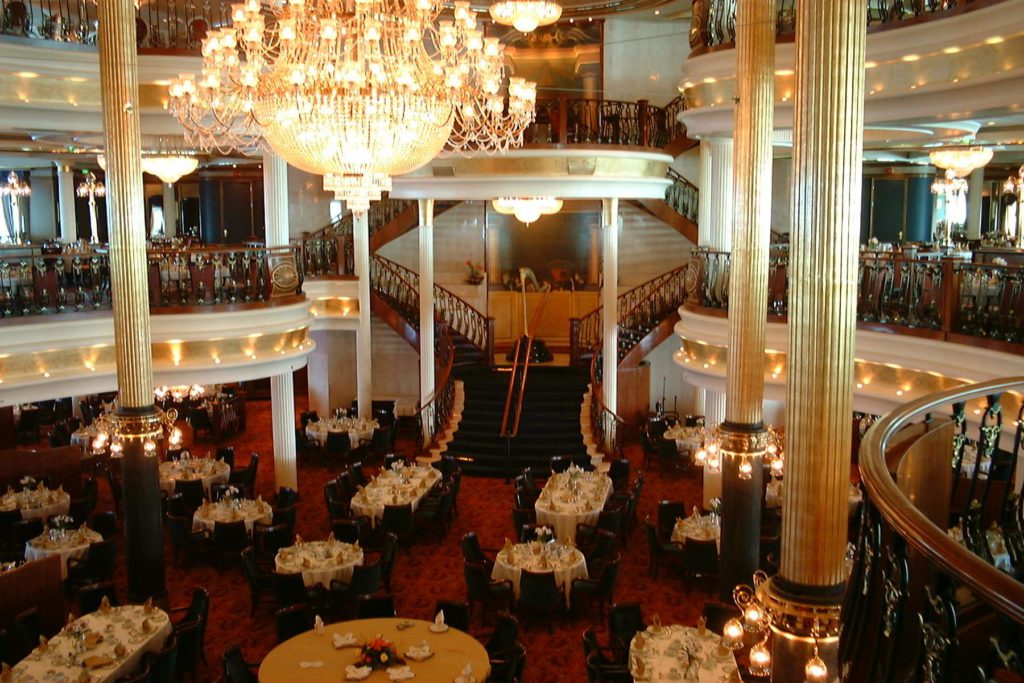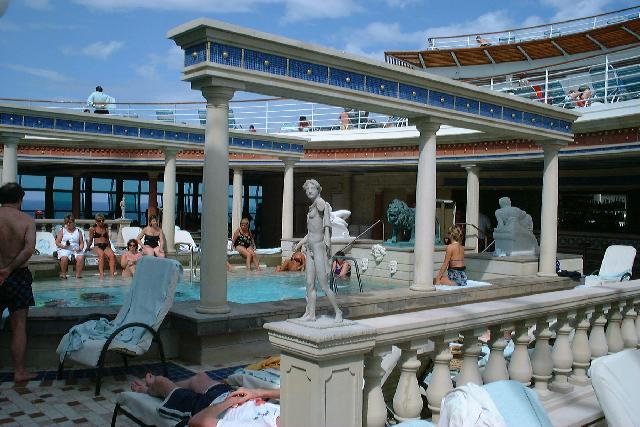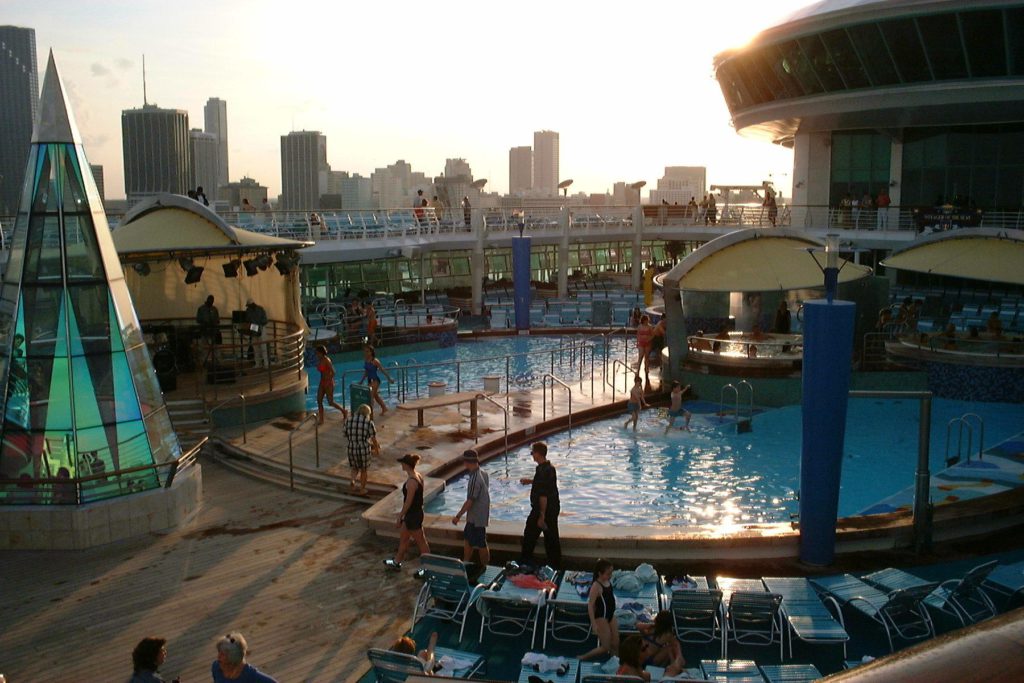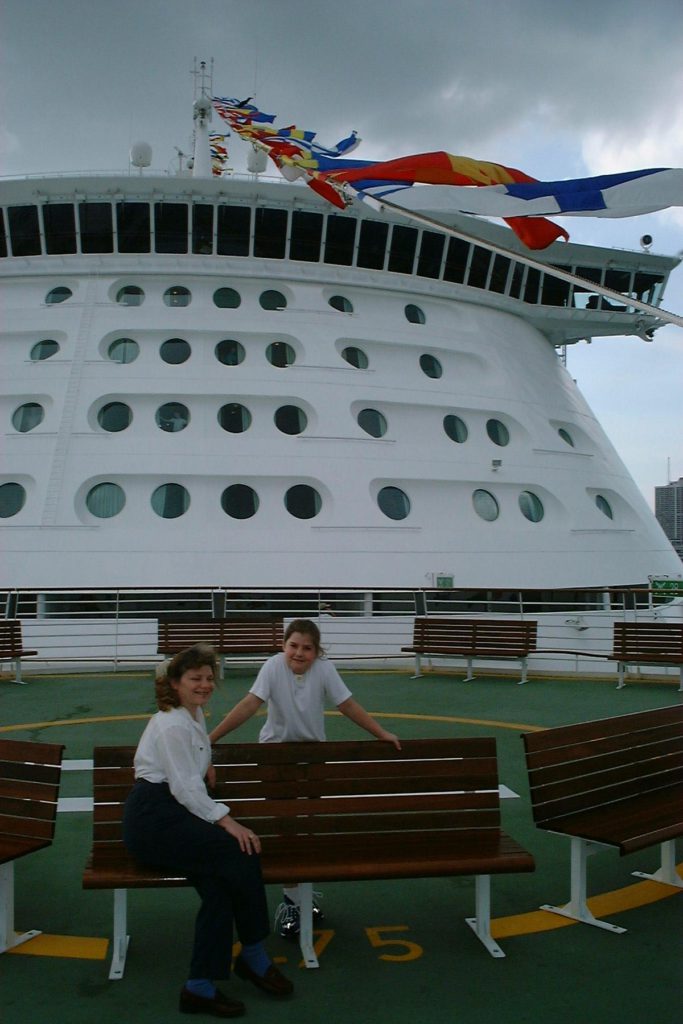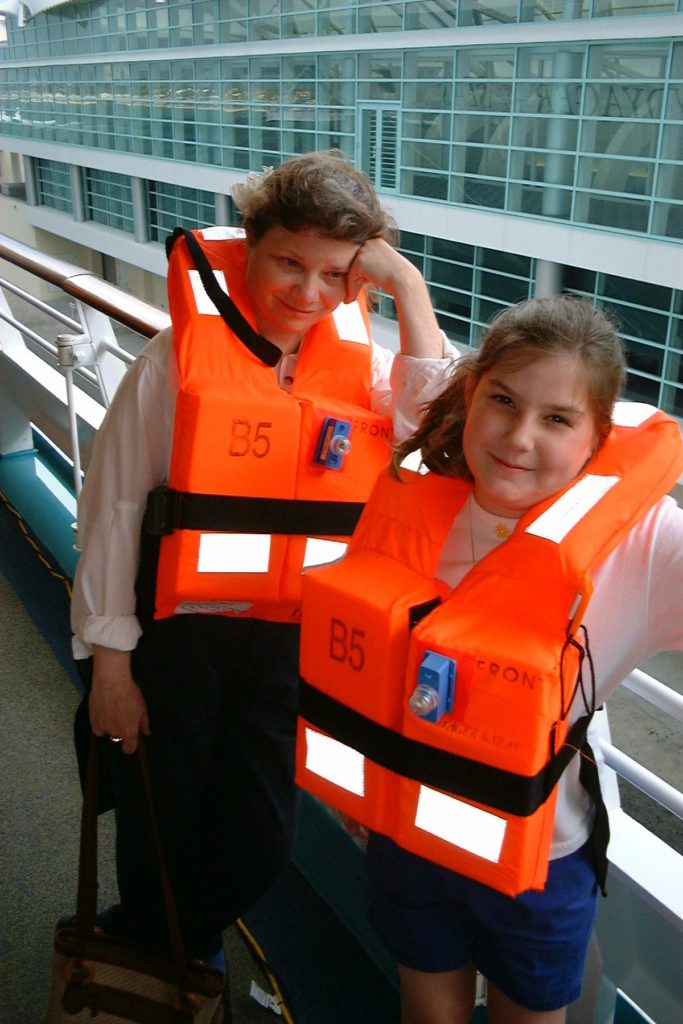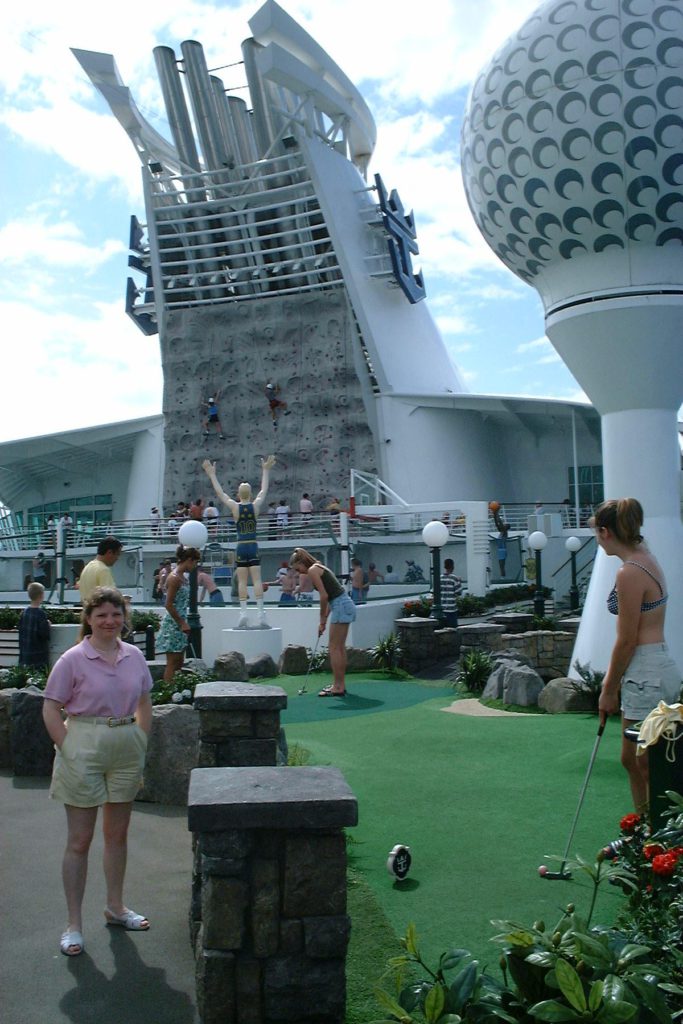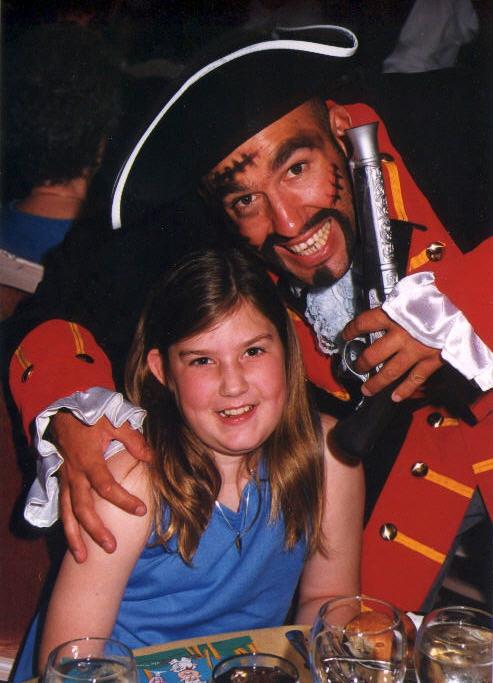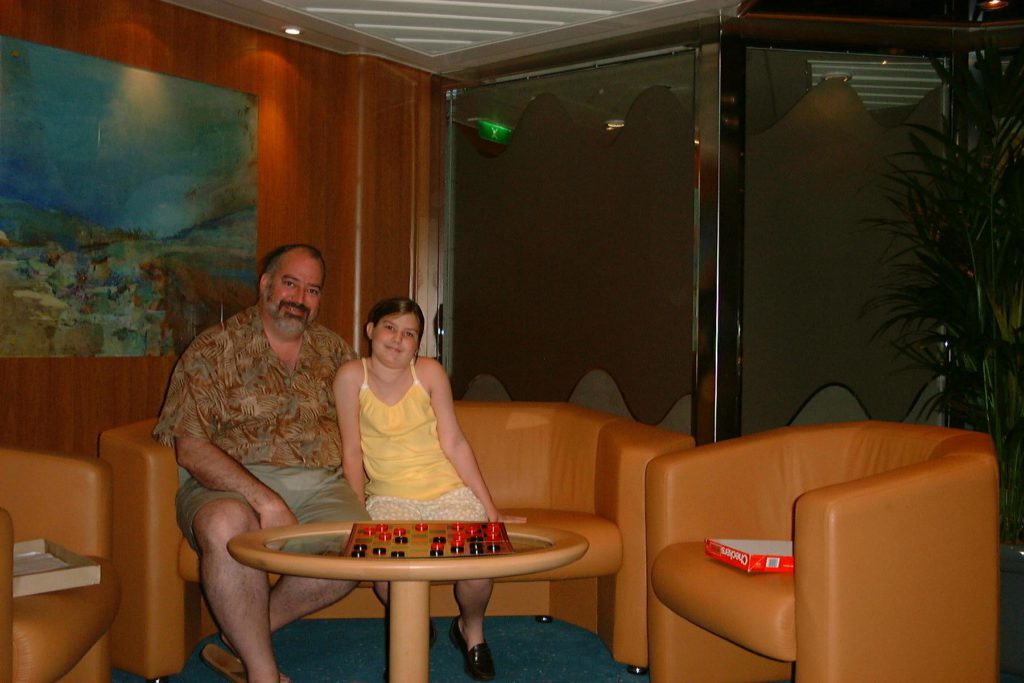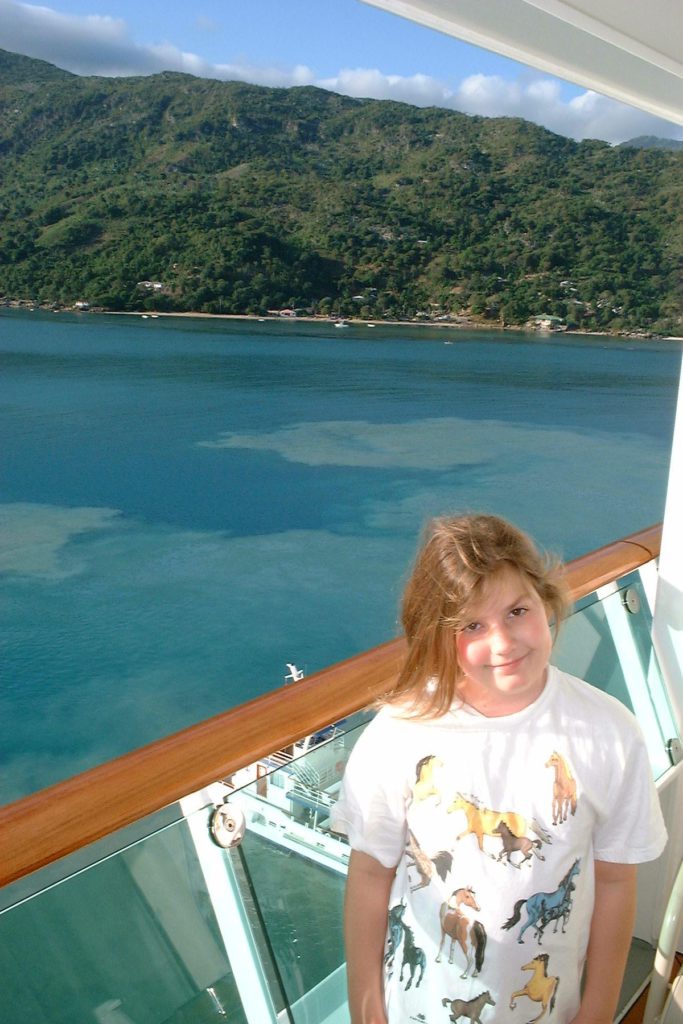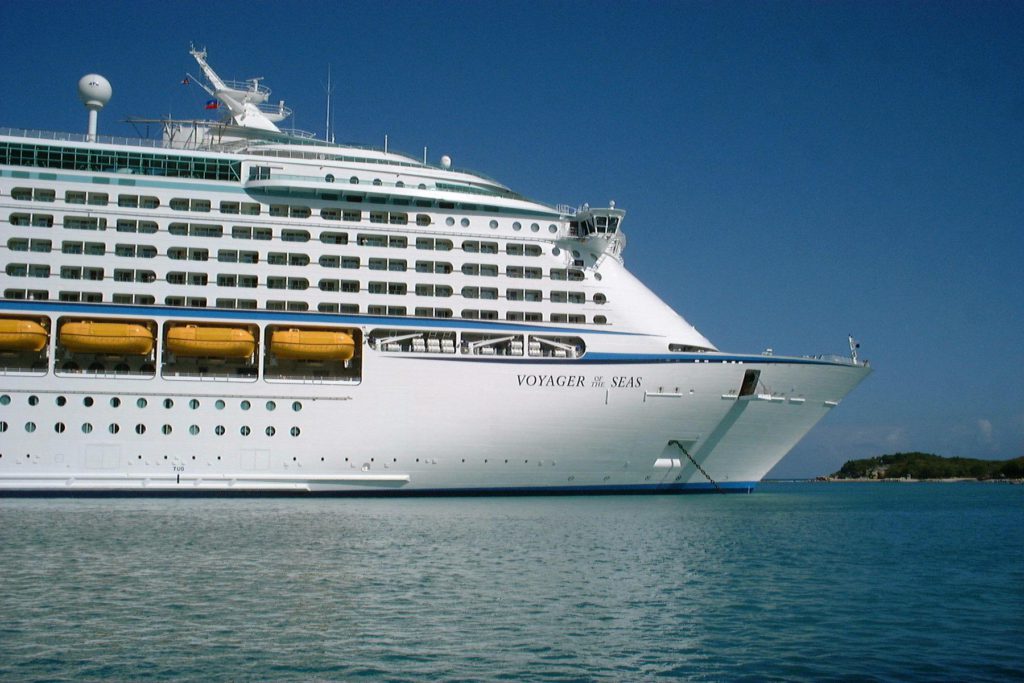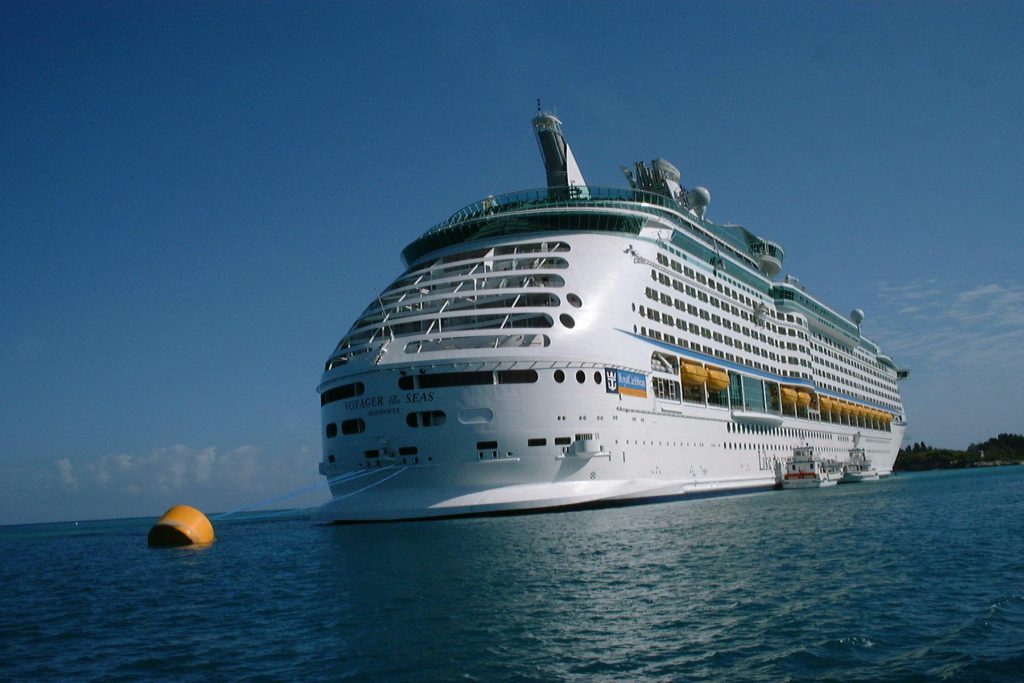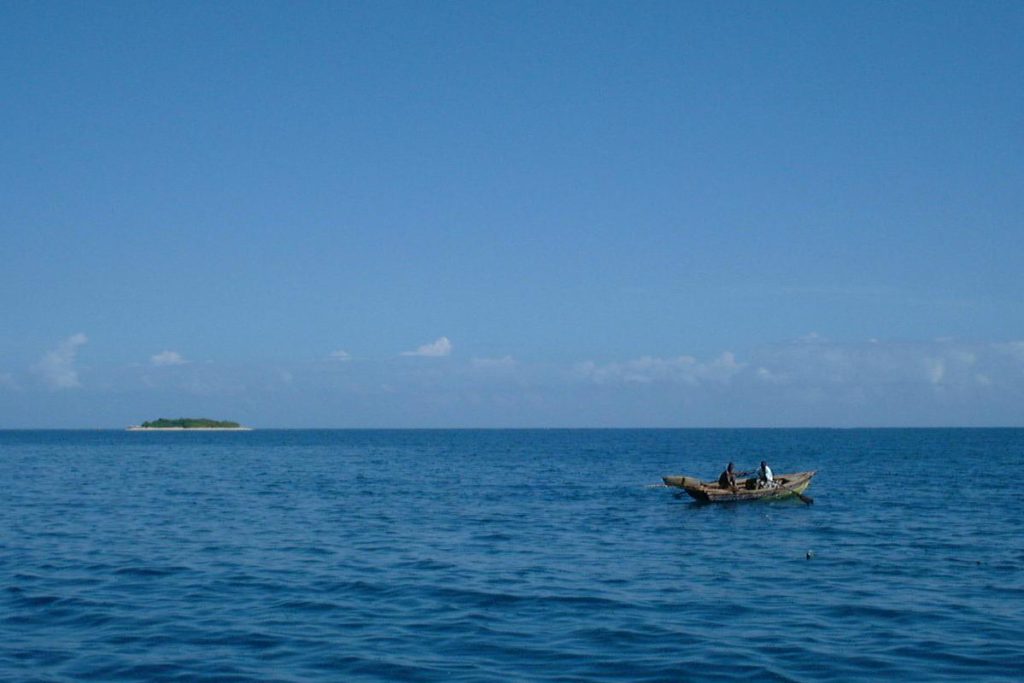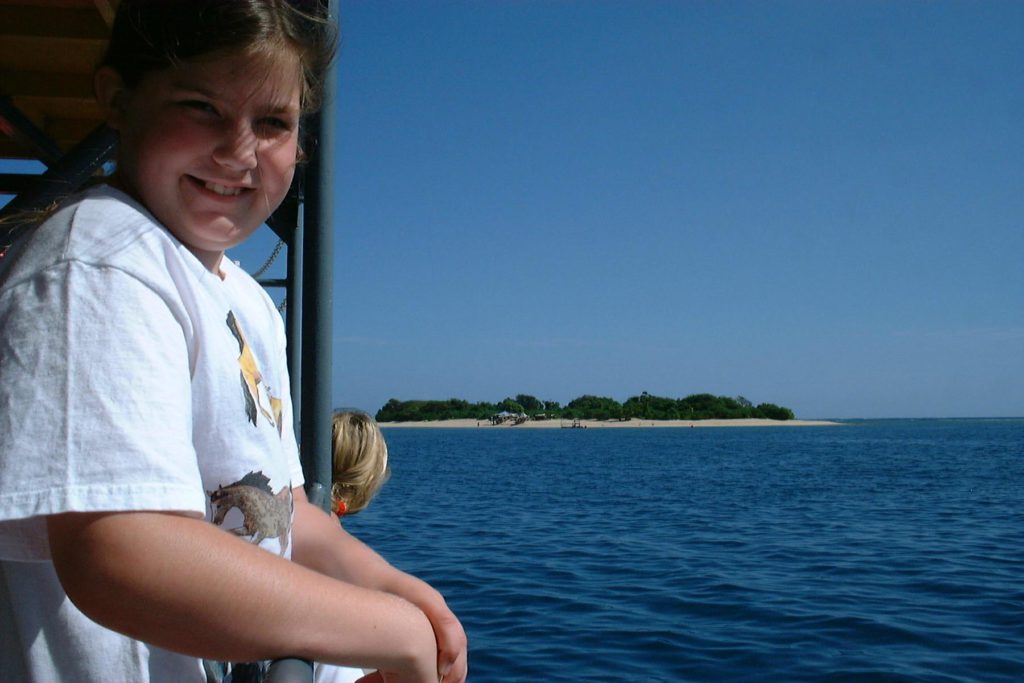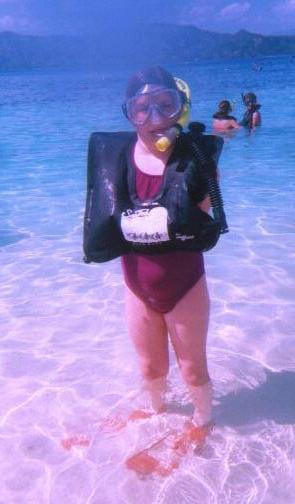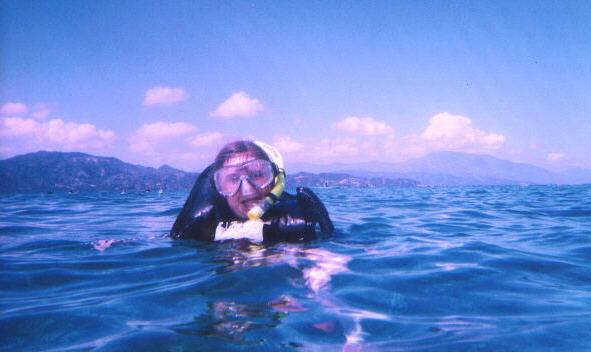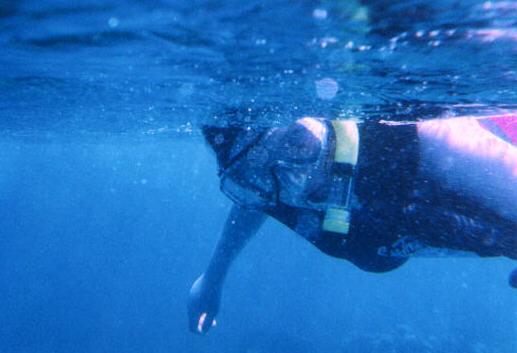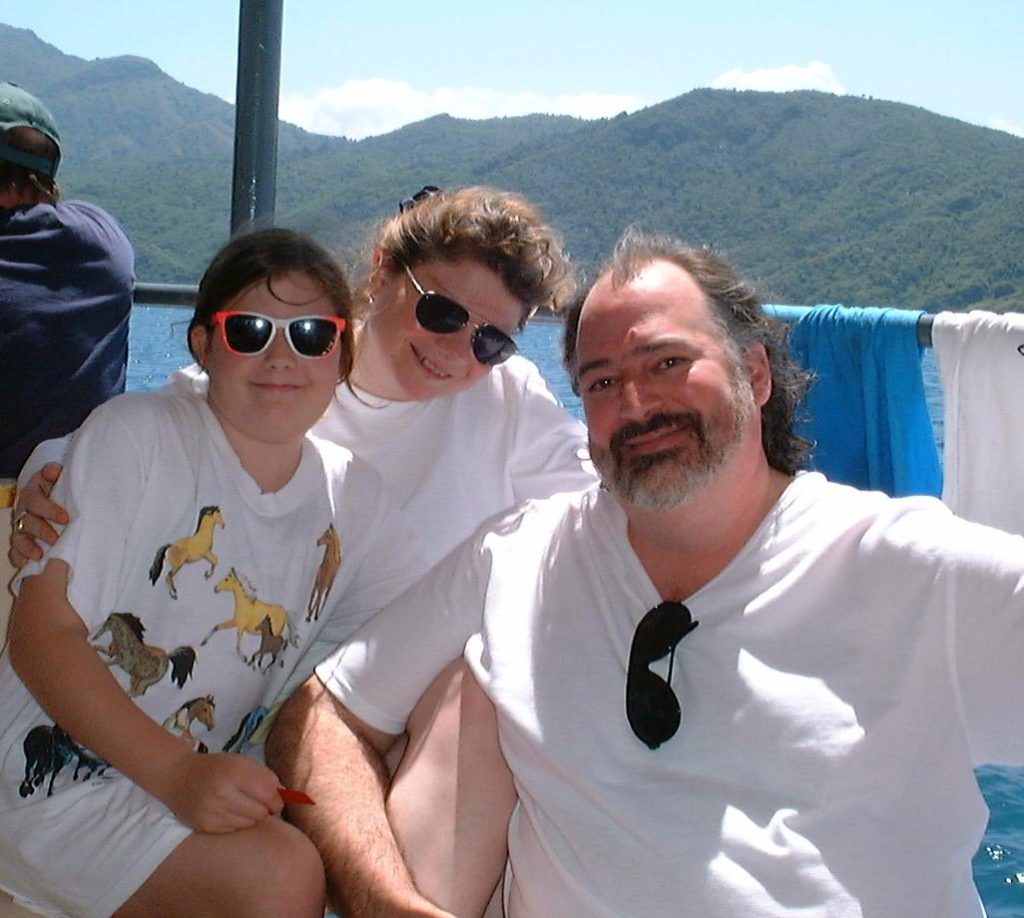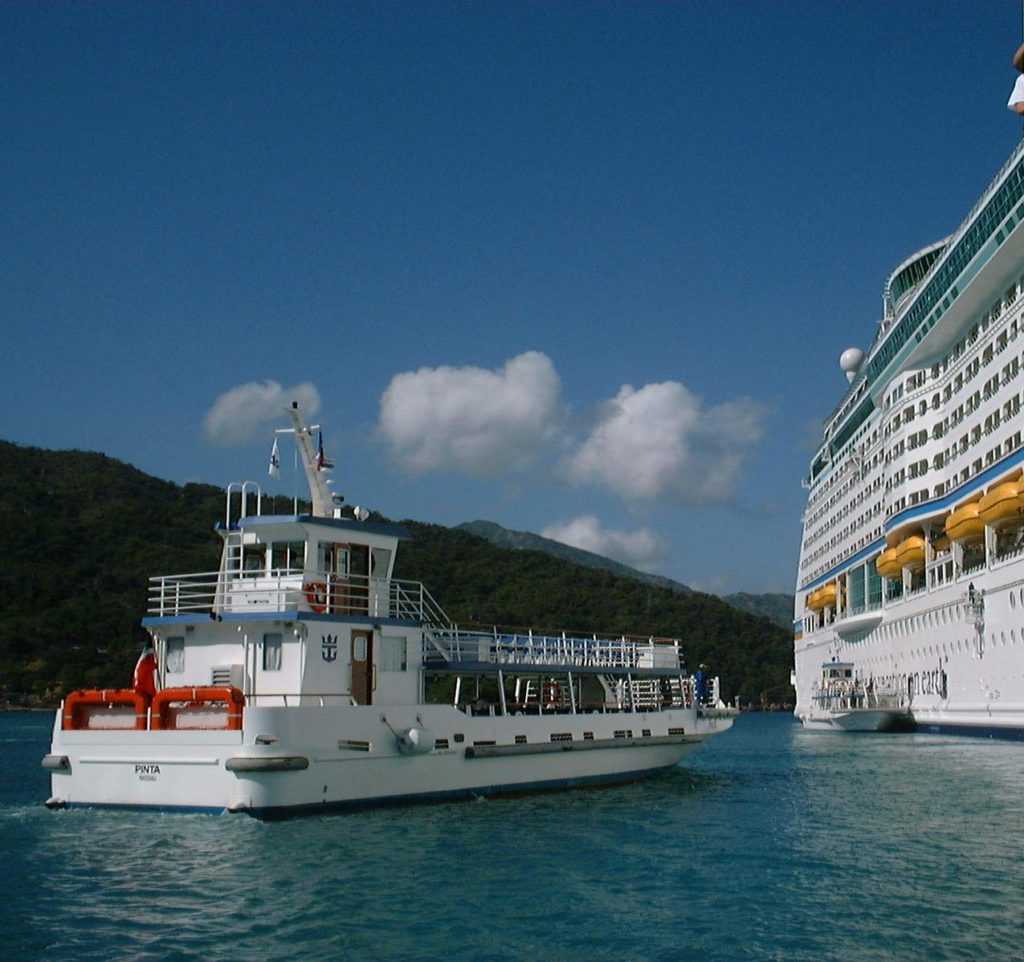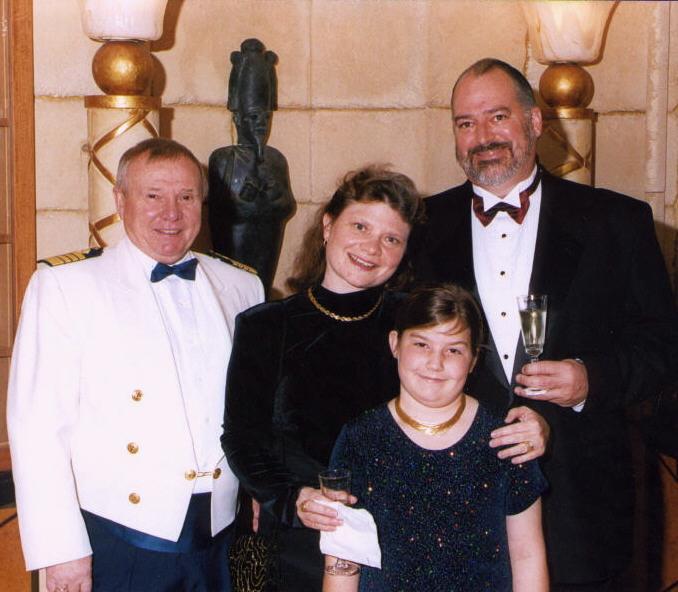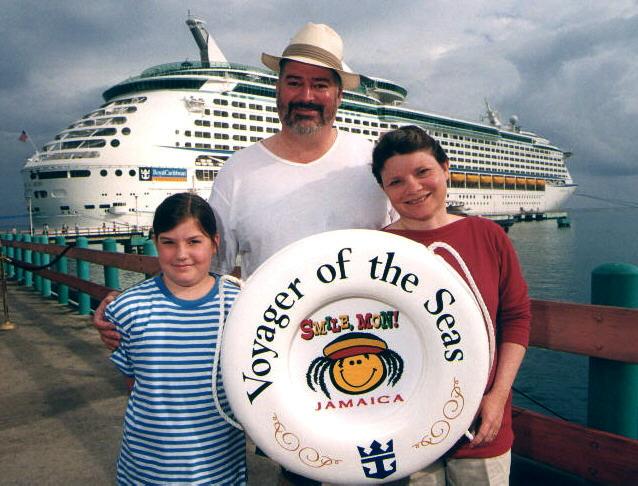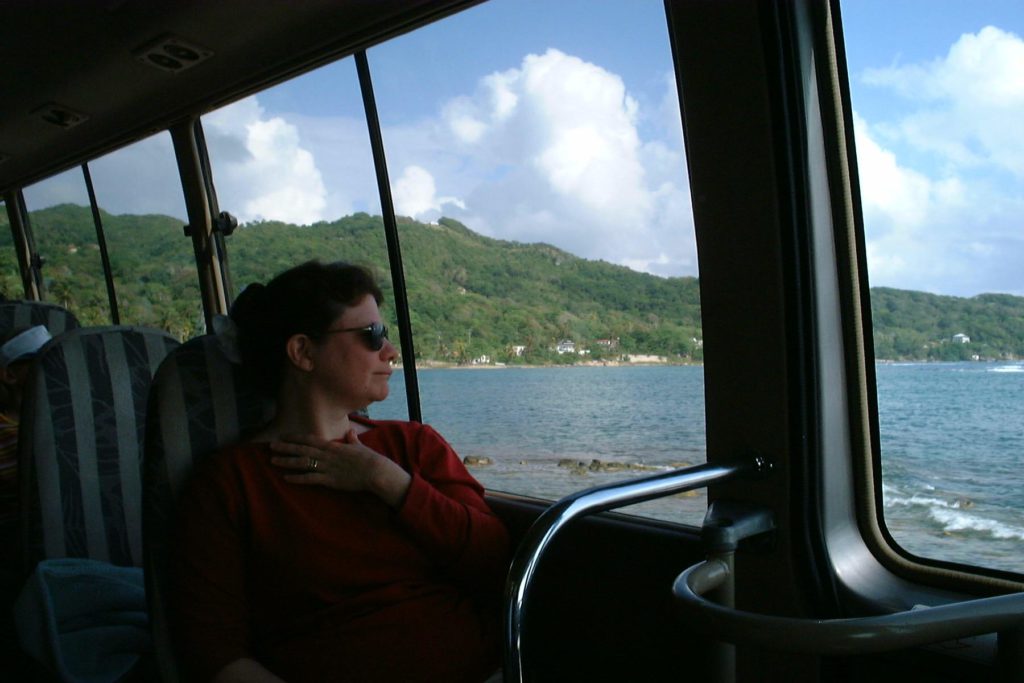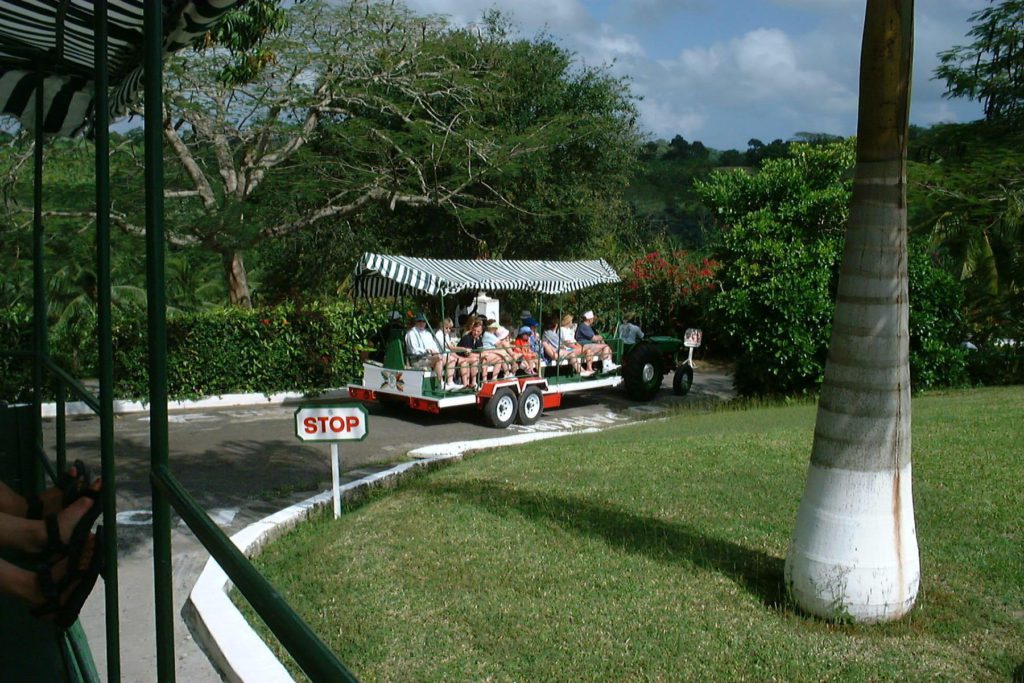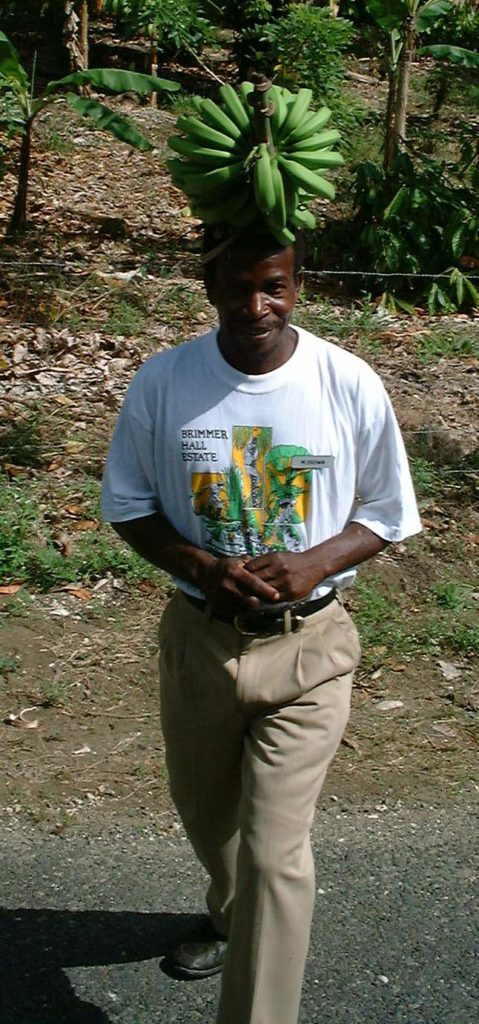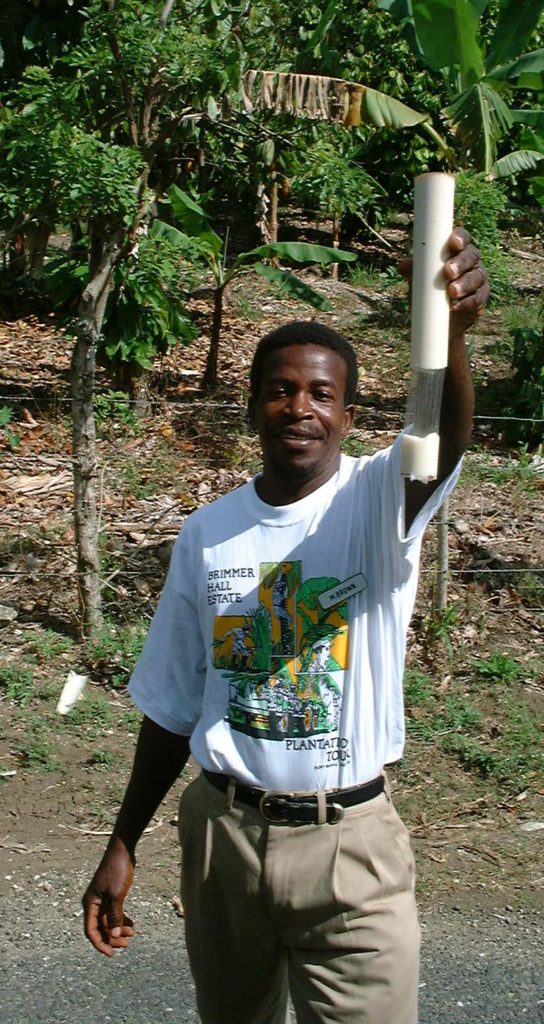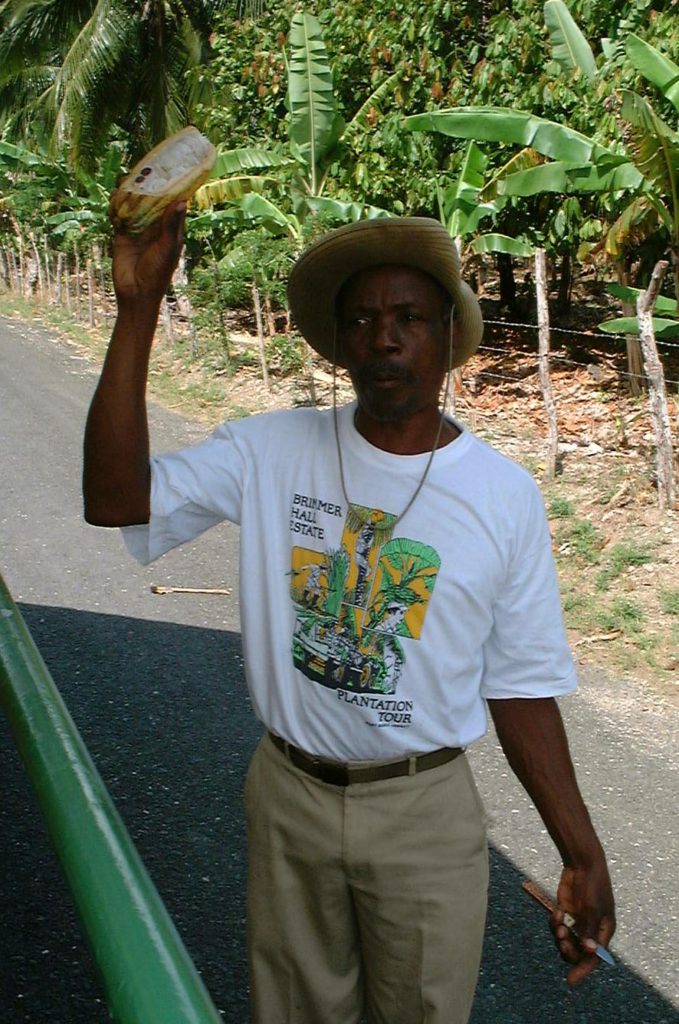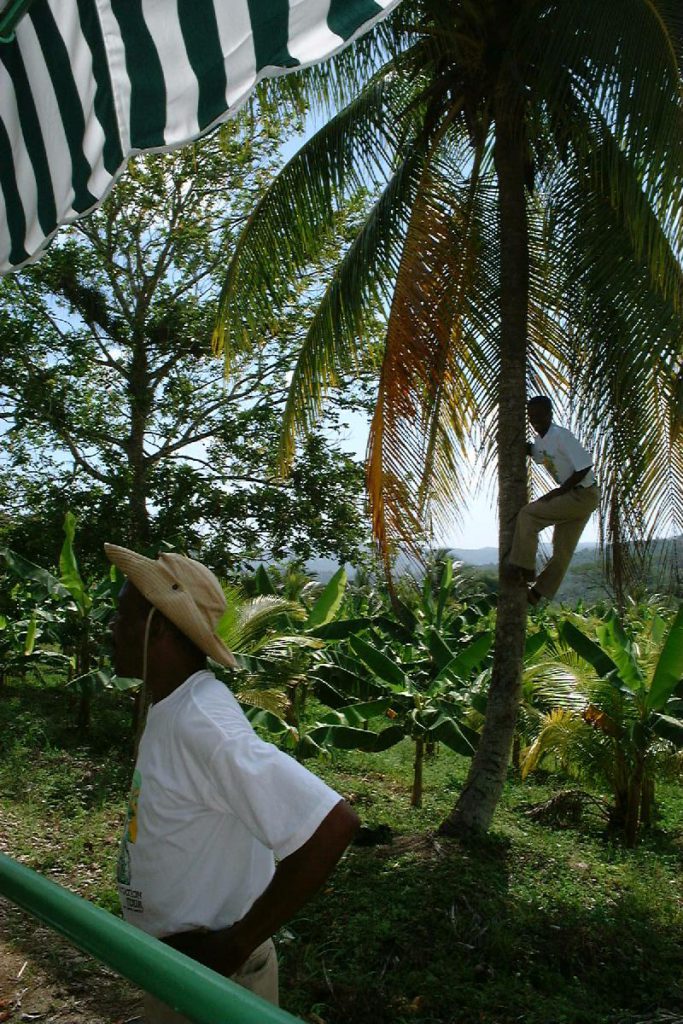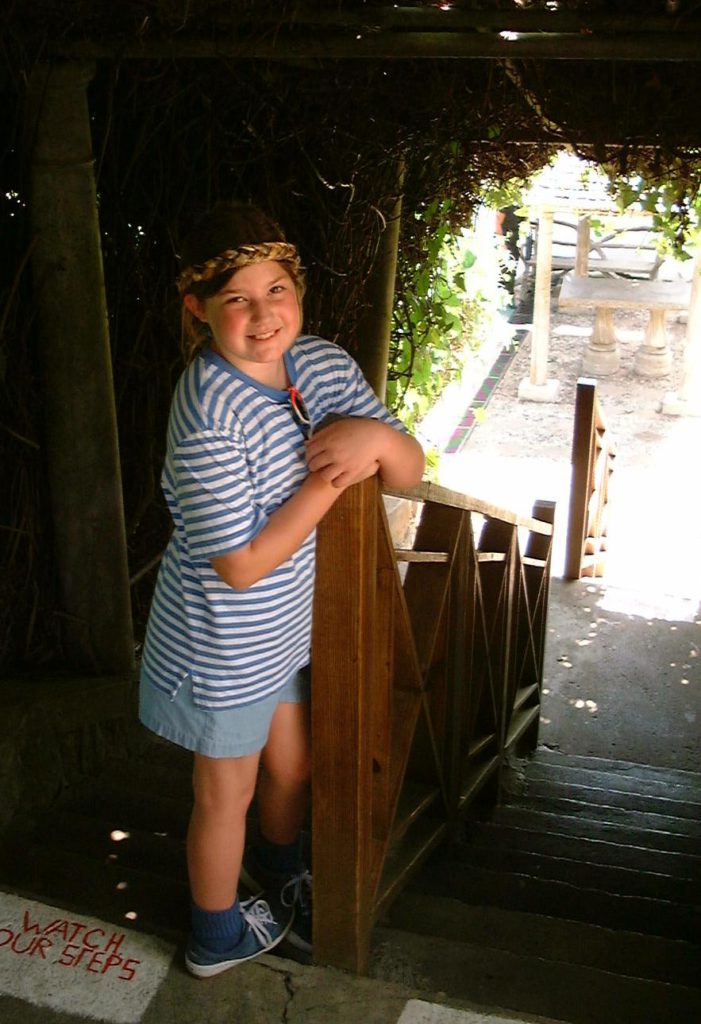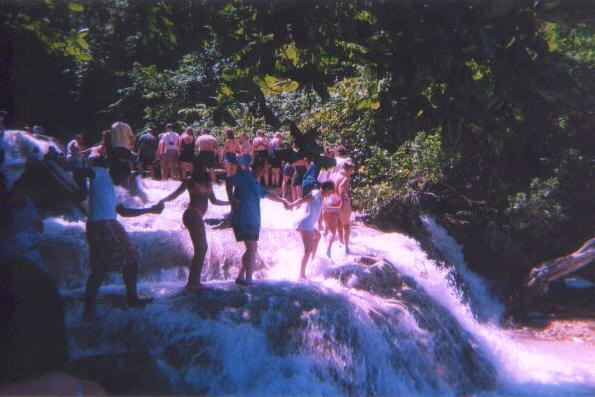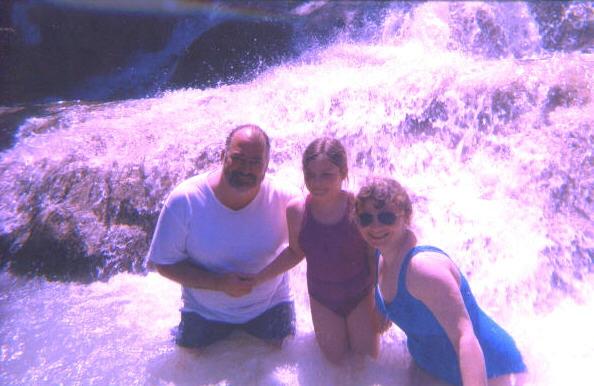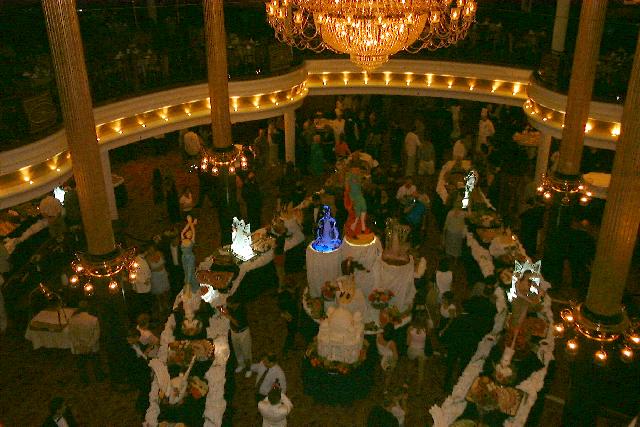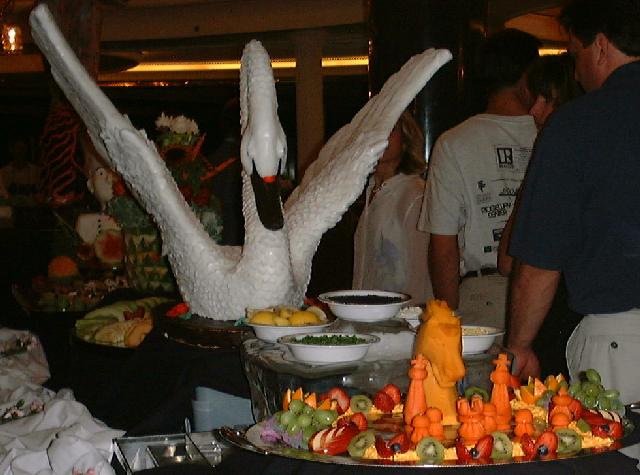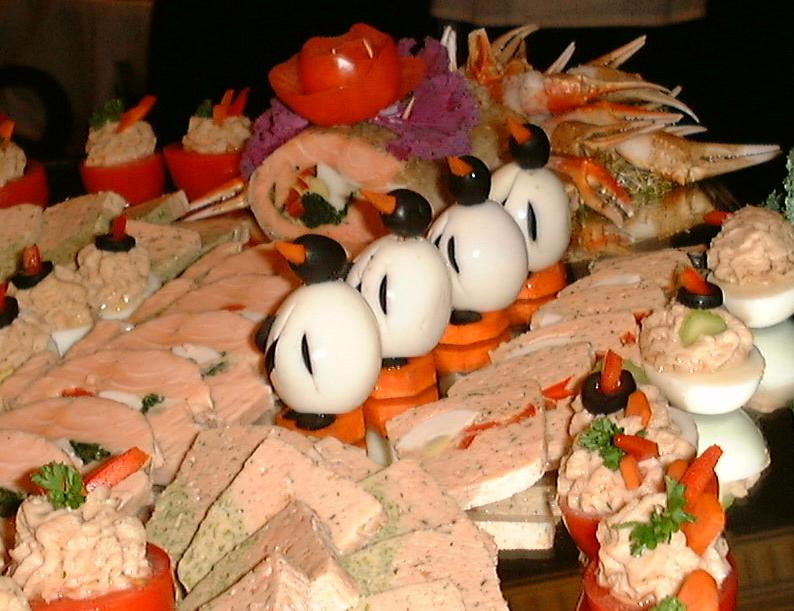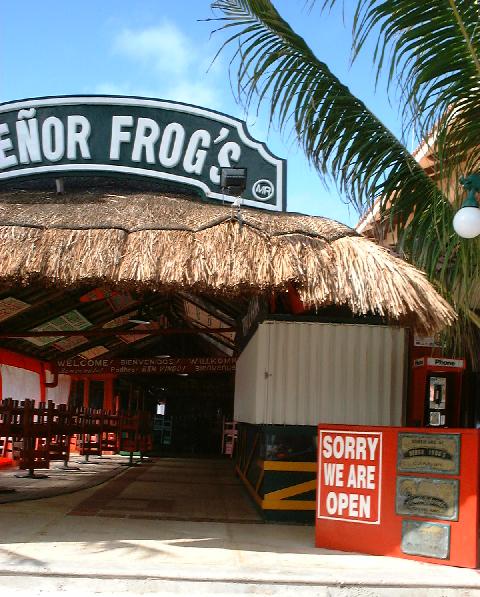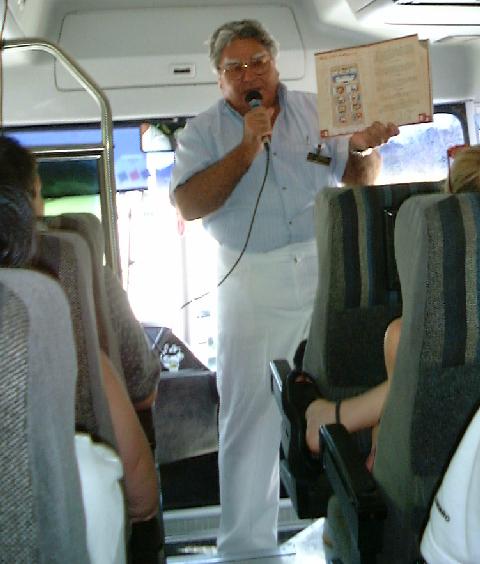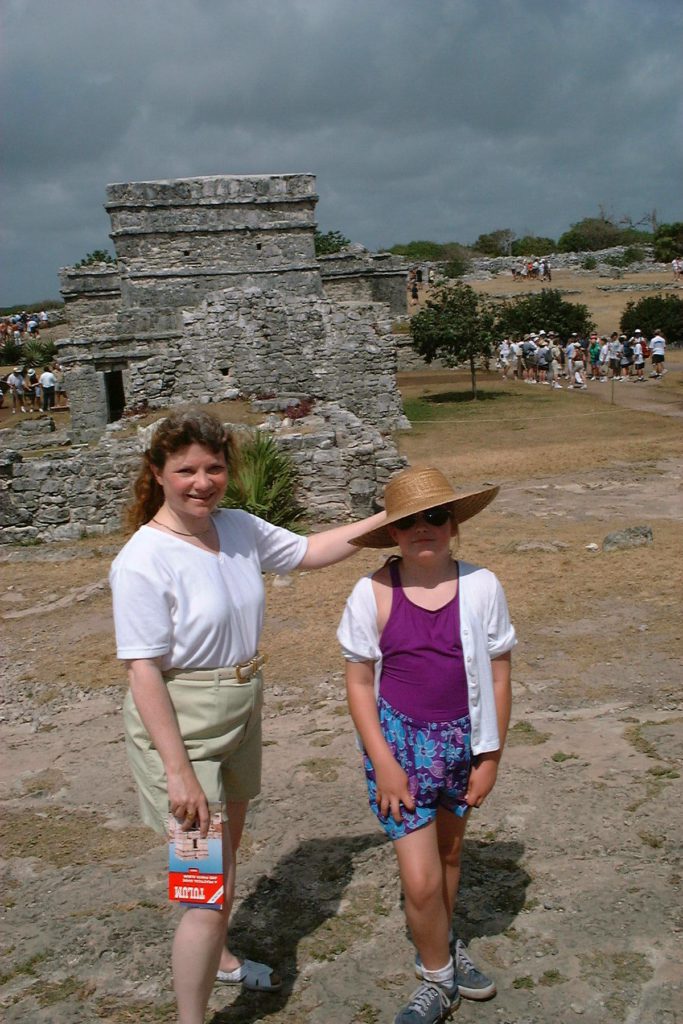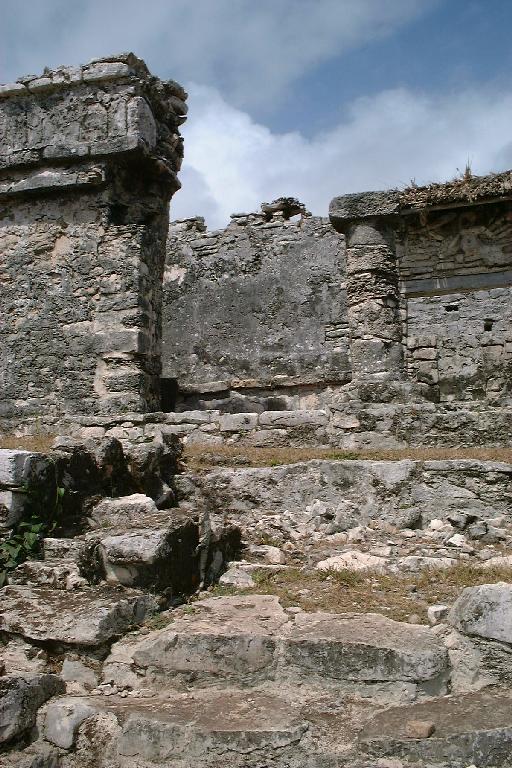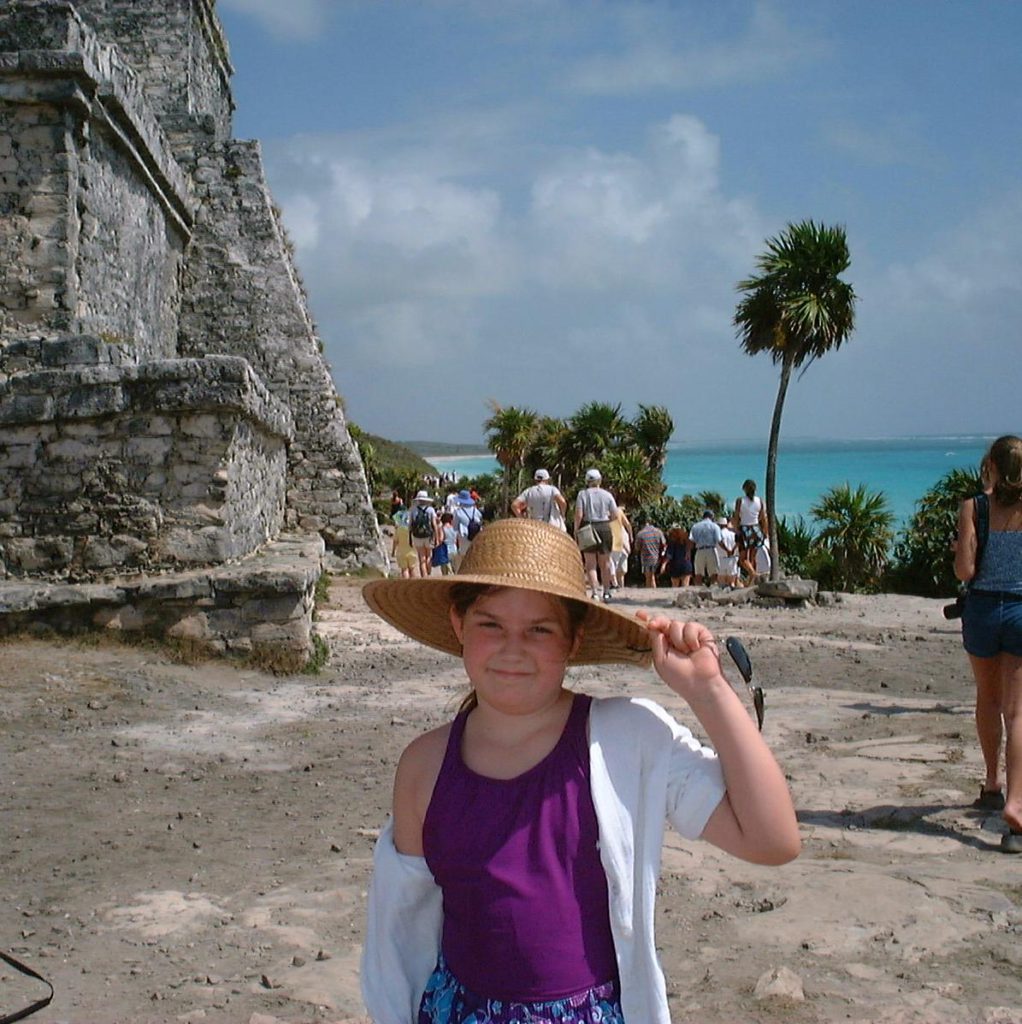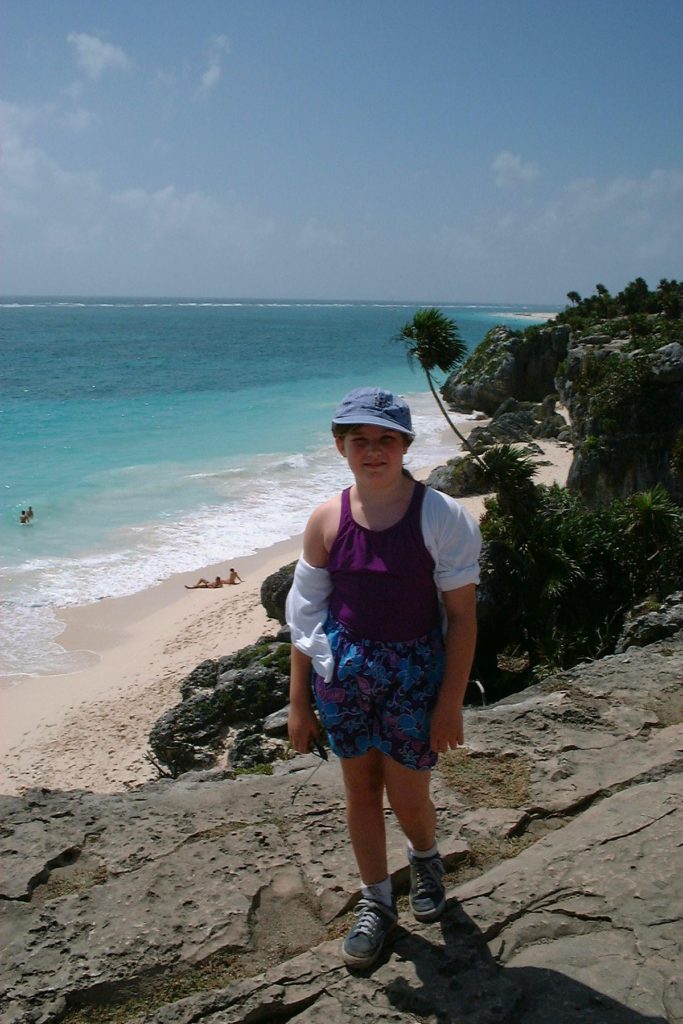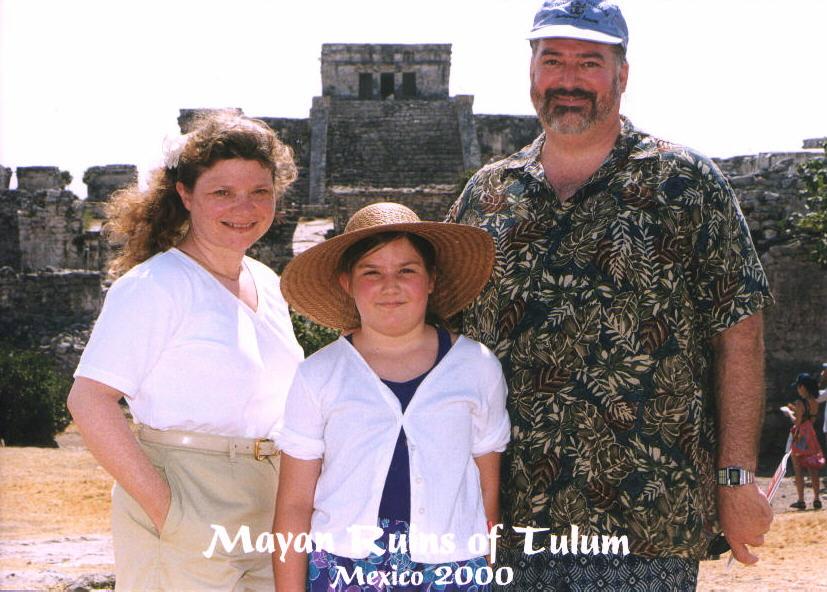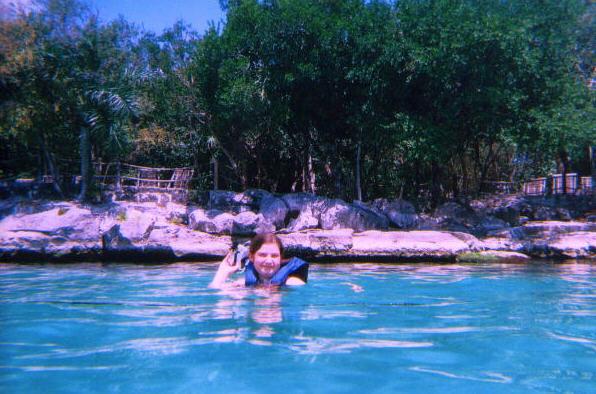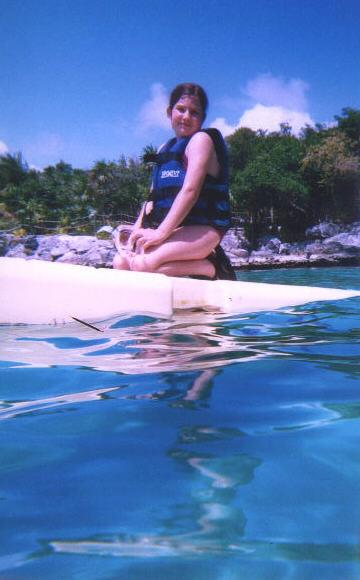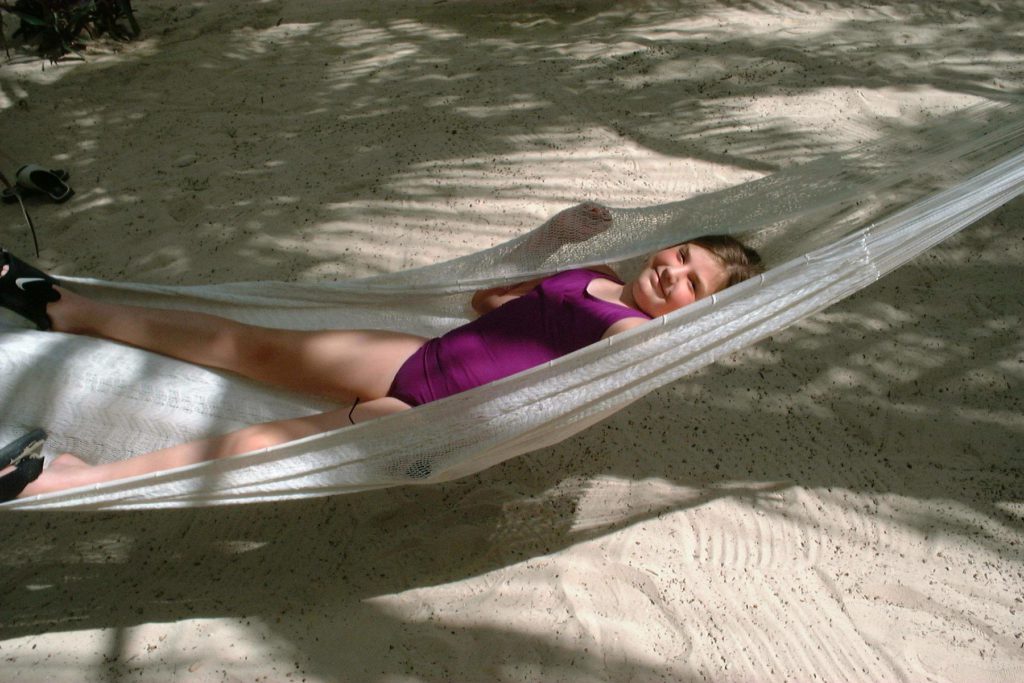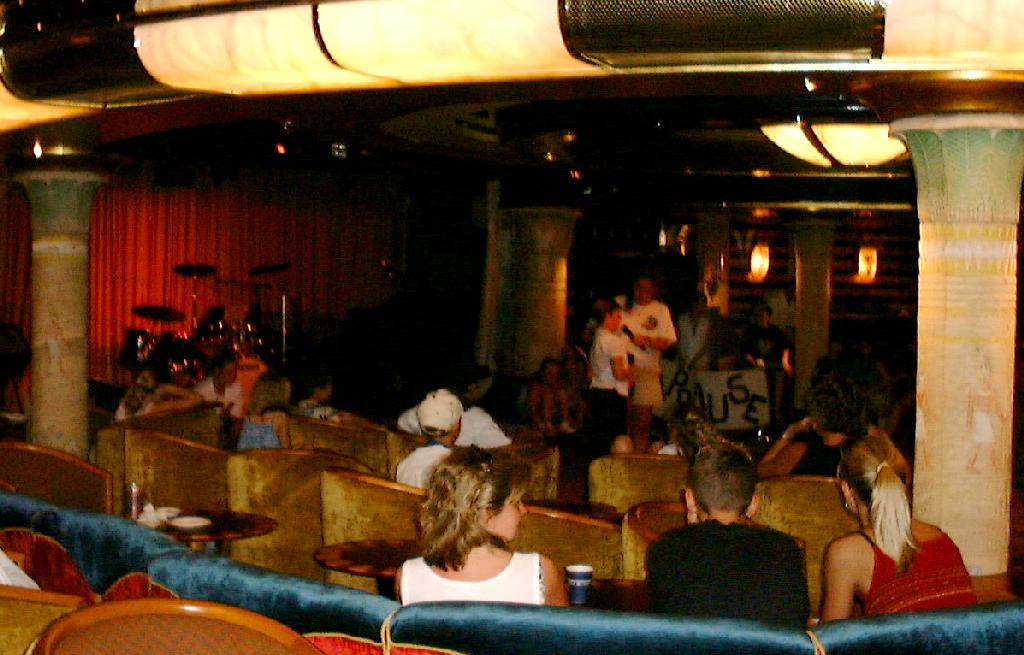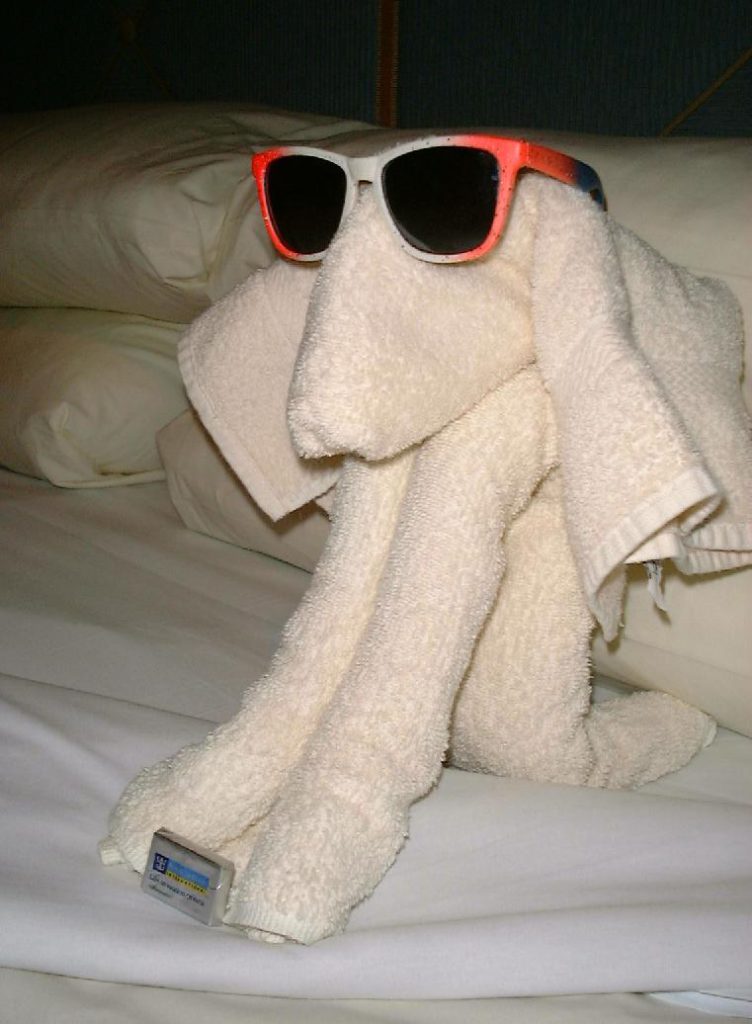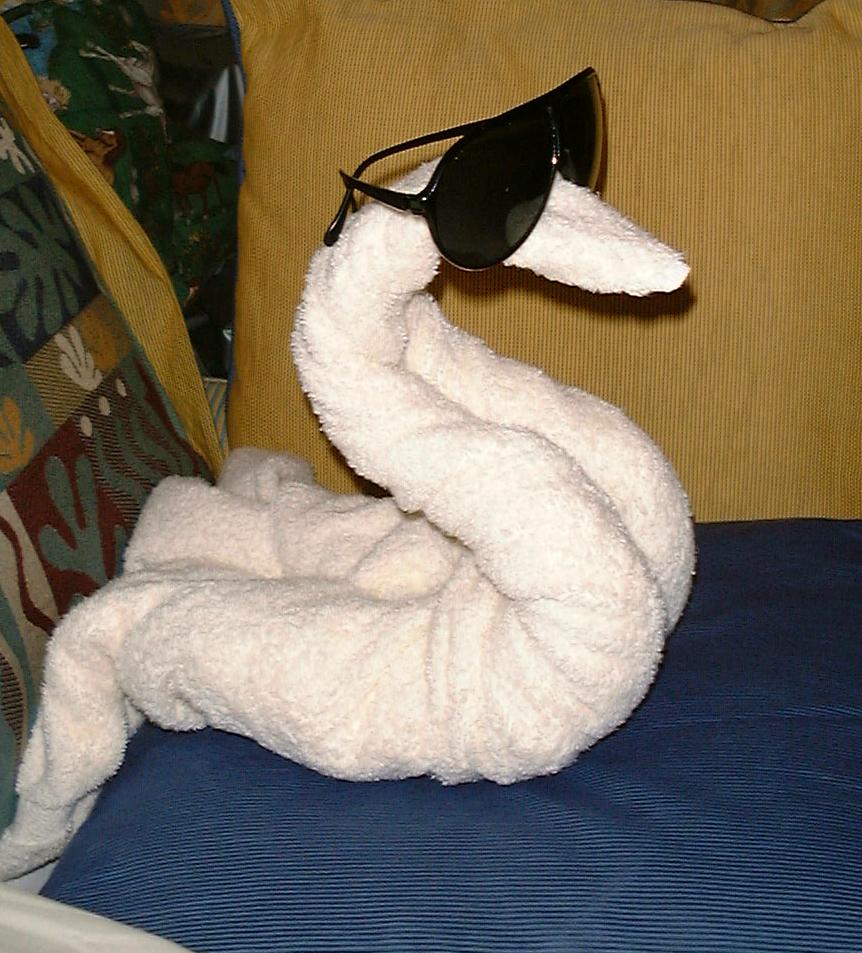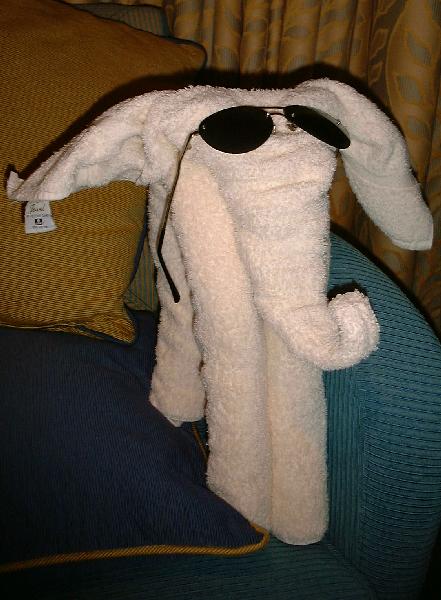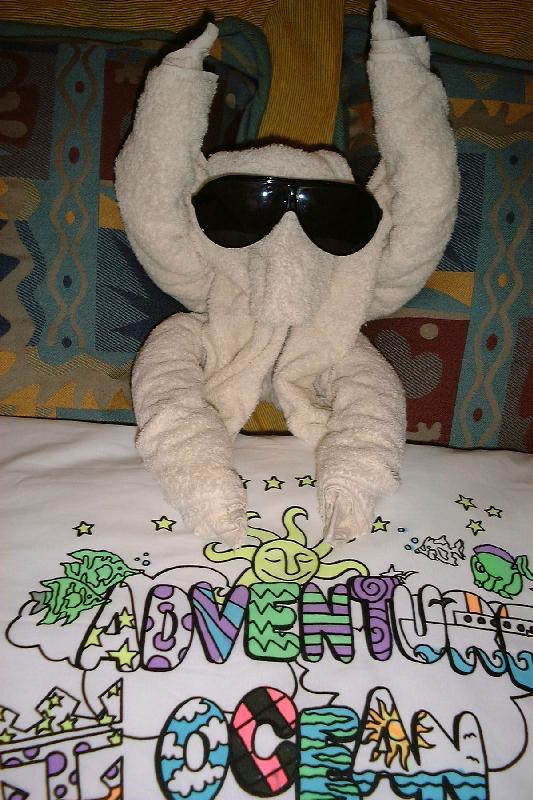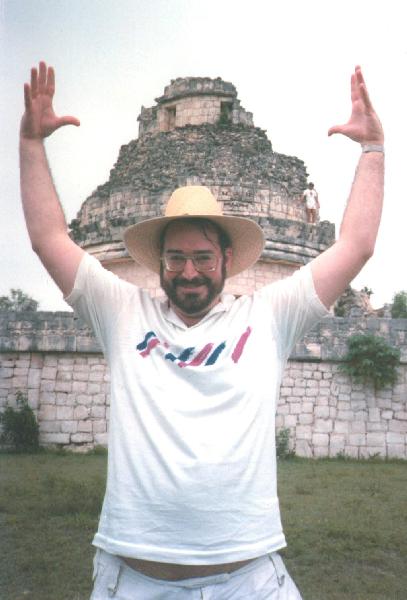Ft. Lauderdale • Limón, Costa Rica • Colon, Panama Grand Cayman • Cozumel, Mexico • Belize
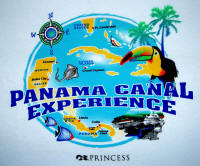
Ft. Lauderdale
Friday, March 18, 2005
The search for a Spring break cruse that matched Dani’s school schedule and went to places we hadn’t been proved a challenge. In fact, there was only one! Fortunately it happened to be on our favorite ship, the Coral Princess, on which we sailed to Alaska two years ago. Ever the engineer, Linda had always wanted to go through the Panama Canal, and that’s where it was headed, so we grabbed the last mini-suite and got a sweet deal on it, too, via the Internet.
The Coral Princess was actually built for the Panama Canal, so it’s skinnier than most new ships. As a result, it accommodates less than 2000 passengers (compared to 3000 on most. ) That difference is what makes it our favorite. The ship has all the big ship amenities — even a ceramics and art studio — without the crowds. Its design is clever, with smaller public spaces and a passenger flow that never crushes everyone into the same area at the same time.
It was also convenient that the ship was leaving from Ft. Lauderdale’s Port Everglades, avoiding the extra distance (and death risk) of Miami. Averaging just over 80 mph on the Turnpike we made it in under four hours, including a stop for gas and food — not necessarily in that order.
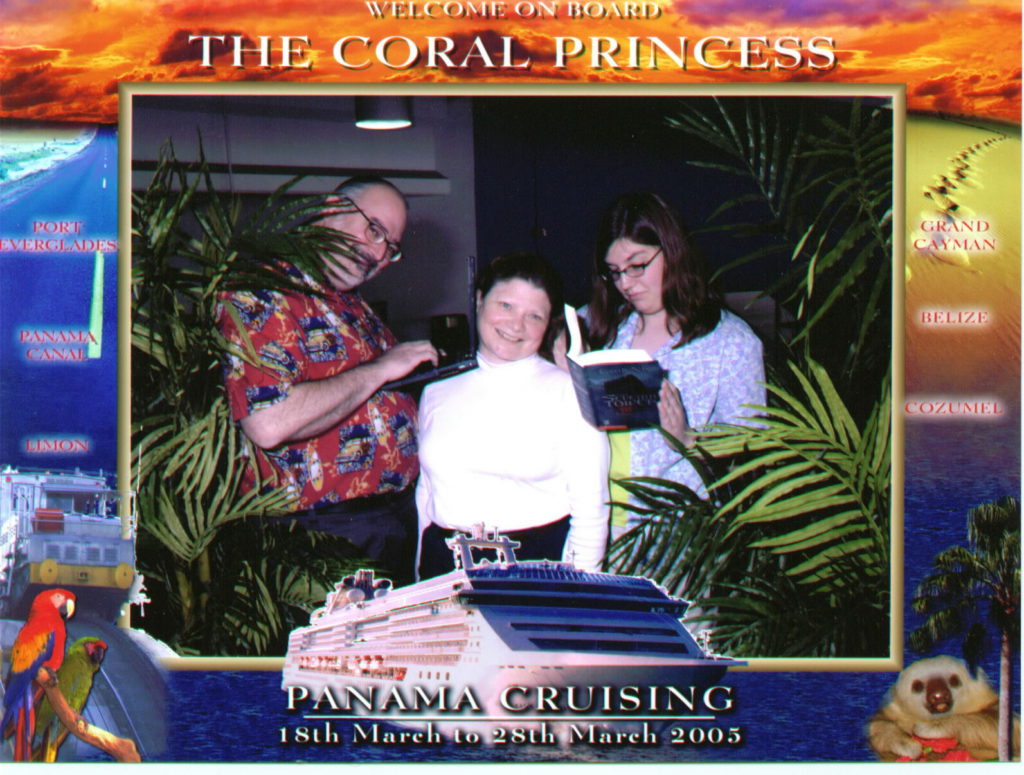
The Port Everglades terminal amazingly grungy (and possibly being remodeled — it was hard to tell), but it didn’t really matter because check in was so efficient we were only there for about five minutes.
Our cabin layout is identical to our last voyage on this ship, but it’s on the port side and forward, which has so far been surprisingly disorienting. Couple that with last summer’s memories of the similar but different Star Princess, and wandering around has been a bit like a bizarre dream, or constant deja vu.
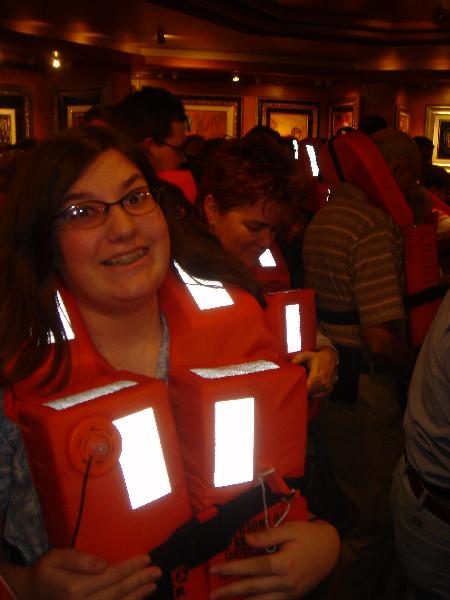
Life station drill was pretty unpleasant, with a hundred or so of us packed into the art gallery. I’m becoming convinced they make it awful so that no matter what happens later you’ll approach it with the attitude, “could be worse.” It’s possible that actually abandoning ship would be more pleasant.
There was a line for anytime seating at the dining room, so we went to the cover charge restaurant, Sabatini’s, (which is always uncrowded at the beginning of the cruise) for their 3000-course dinner. Service and food were good, in fact identical to previous visits on this and other Princess ships.
At Sea
Saturday, March 19, 2005
We spent a restful day at sea. Dani and I watched a pottery wheel demonstration, then spent a couple of hours painting ceramics in the studio. Linda spent most of the day doing needlepoint or reading on the balcony. It was the only day I can remember having all three meals in the ships dining room.
I learned my friend Bill Canon, the Hollywood screenwriter, died suddenly of a heart attack last week. He was on his boat in Santa Barbara Harbor. His death came as quite a shock, as I’d just talked to him a few days before. Education to Go has asked me to take over his online classes. It was a difficult way to get the news, but I suppose there’s no good way. I’ll miss him.
Dinner was memorable. It was formal night, so we arrived from the photographers as dressed up as we ever get, in tuxes and evening gowns (I opted for the tux, rather than the gown).
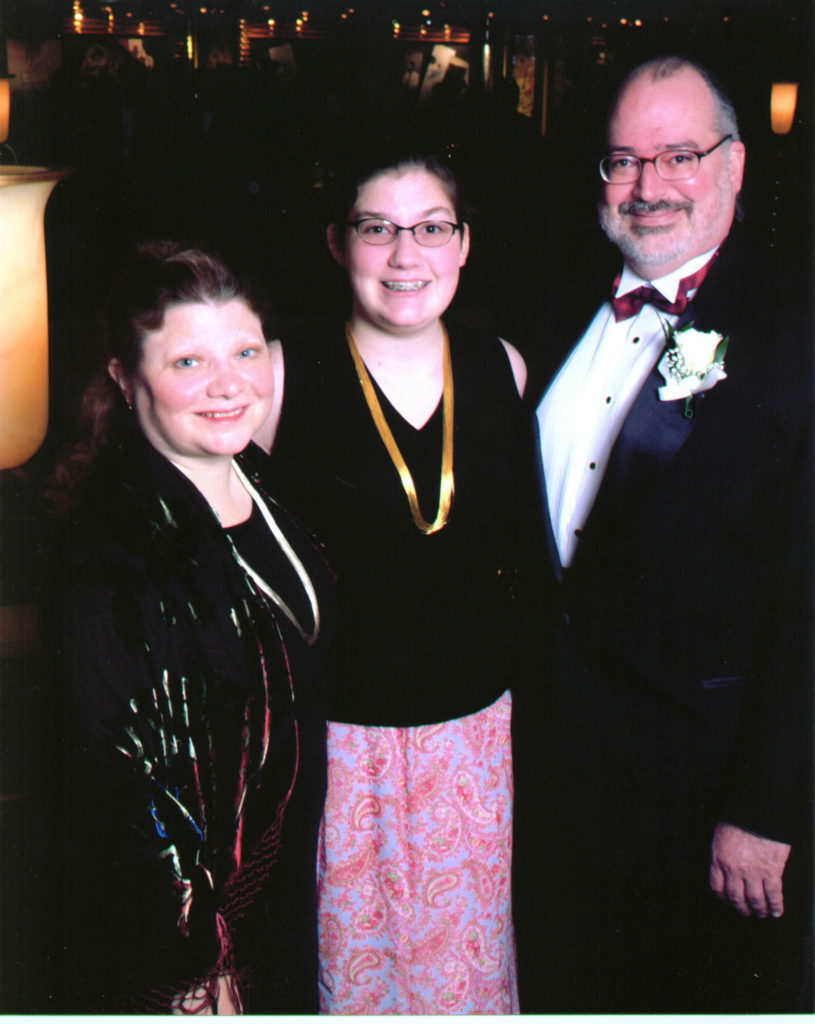
We were greeted at the door by Godwin, the head waiter, who knew our names despite the fact we’d never met. (We asked him later and he said he saw our name on the ID screen as he watched the passengers check in. Wow. ) He ushered us to a lovely window table which must be the best table in the house, not because of its location but because our waiter was Jorge, possibly the finest waiter I’ve ever had. Although he was busy, he made excellent service seem easy, and he was extraordinarily personable, and funny, too. (Waving the pepper grinder, he asked if I wanted pepper on my salad; when I said yes, he set the tiny pepper shaker from the table next to my plate. )
Jorge is from Mexico, and apologizes for his English, which he says is only slightly better than his Spanish. As other diners left they were asking Jorge how they could get one of his tables again. As we, too, were wondering this the problem was solved for us. Goodwin came by and asked us I we’d like him to reserve that table for us every night at the same time. We replied with a resounding “Yes!”
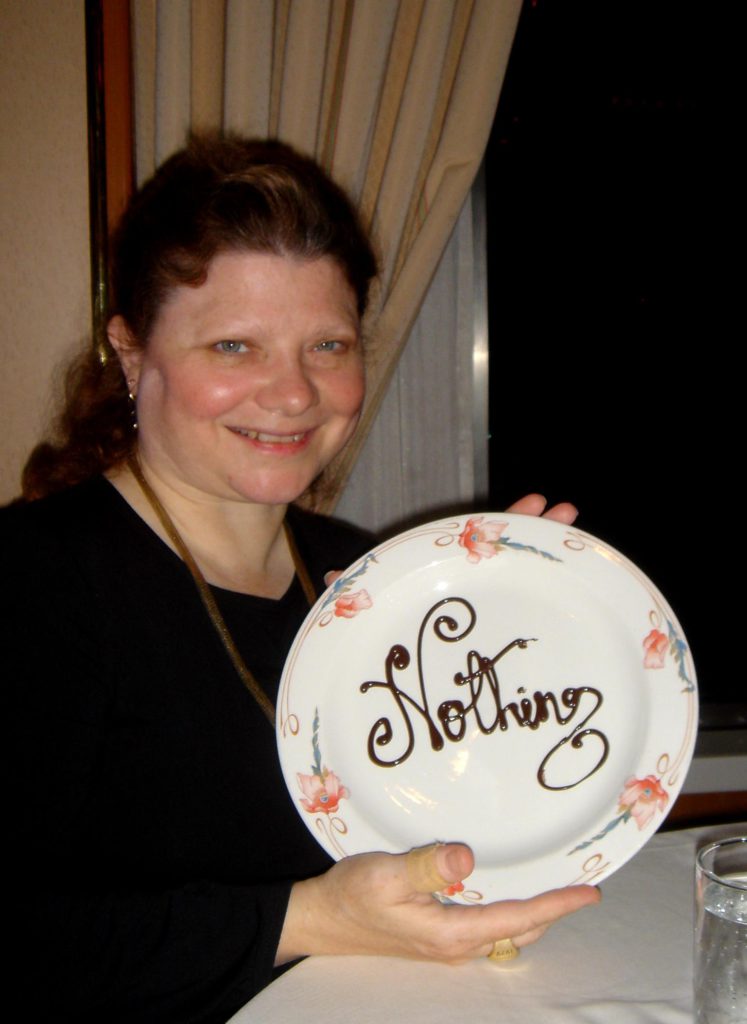
Linda said she wanted nothing for dessert. You can see the results in the photo. The Broadway show in the Princess Theater was top notch. It’s staging was particularly unique, with onstage locker and the cast changing wardrobes between numbers in full view. The segments from Evita, Grease and Oklahoma were particularly good.
At Sea
Sunday, March 20, 2005
Another quiet day a sea, with a little painting and a long nap. we’re definitely now on cruise time. Dani is getting a cold, probably the one I dodged last week.
Limón, Costa Rica
Monday, March 21, 2005
We docked in the wee hours at Limón, Costa Rica. Dani didn’t feel well enough for our rainforest aerial tram trip, so Linda and I set out on our own.
Our guide, Porfiro, was extremely intelligent and entertaining. He grew up in a shack on a coffee plantation, but because of Costa Rica’s incredible educational system (92% literacy rate) he was able to finish college on a full scholarship. The educational system is paid for with funds saved by eliminating the country’s entire army. Sounds like a plan.
Costa Rica is extremely conservation oriented. 25% of the country is national parks and other preserves. And there are serious effort to promote bio-diversity in all areas, including agricultural lands. This is partly subsidized by tourism, which accounts for 45% of the country’s economy.
Limón is a small town with no harbor, just a pier. We boarded a bus and headed out of town, which didn’t take long. By our standards, the buildings are shacks, some little more than piles of corrugated metal. But as Porfiro put it, “most people are happy, because you can’t miss what you don’t know about. ” I noticed they all had TV antennas, though.
The staples of Costa Rica are rice and beans. As Porfiro explained, they eat three meals a day:
- Breakfast: Rice and Beans
- Lunch: Rice and Beans
- Dinner: Beans and Rice
Once out of town we were surrounded by verdant countryside, interspersed with banana and pineapple plantations. The country’s main crop, coffee, is only grown above 3000 ft, and elevation we never reached
The country spans the isthmus, from Caribbean to Pacific, between Nicaragua and Panama. There are over 600 rivers — we crossed many — and nearly a dozen distinct bio zones.
We also crossed some impressive chasms created by a 1991 earthquake. The entire isthmus is geologically young, having been thrust up about 70 million years ago to form a land bridge between North and South America. This allowed the migration of species in both directions, and altered the world’s ocean currents, allowing the gulf stream to warm Europe. A number of active volcanoes testify to the area’s continued geologic activity.
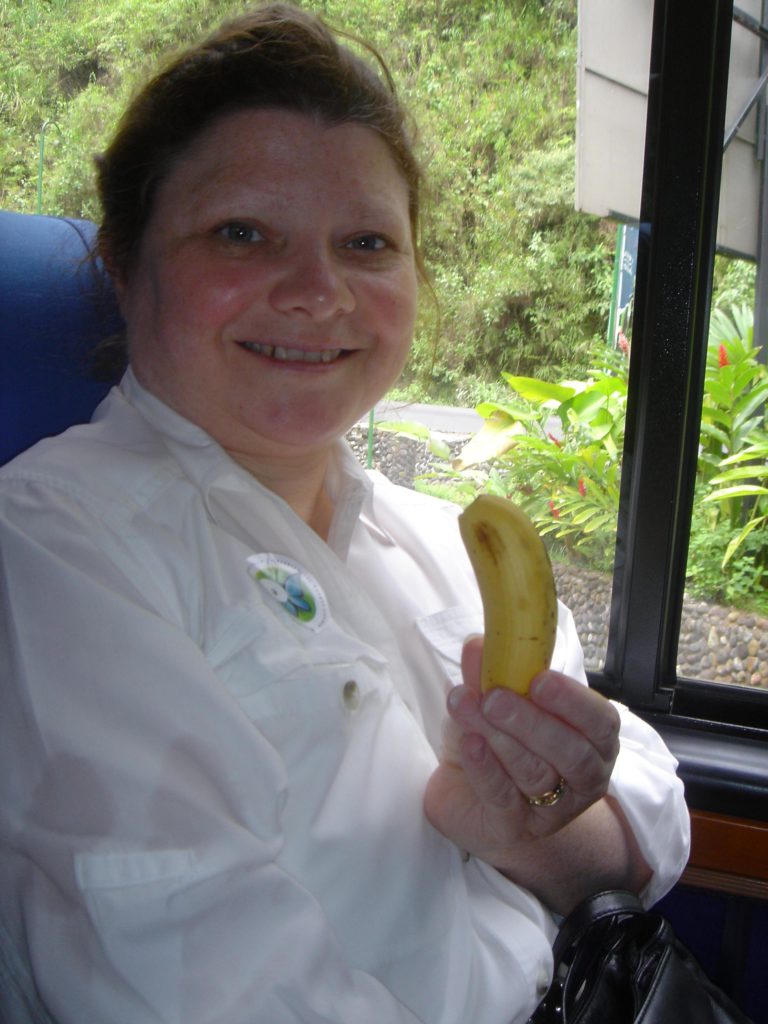
Not far out of Limón our driver stopped and bought us a stalk of delicious little bananas. We learned more about them later.
It was about a two hour drive to the aerial tram, where we rode in an open trailer pulled by a tractor to reach the boarding area. The tram travels over a mile, making a round trip in just over an hour, and stopping periodically to load and unload. There are 24 seven-passenger cars. The seventh passenger is a naturalist.
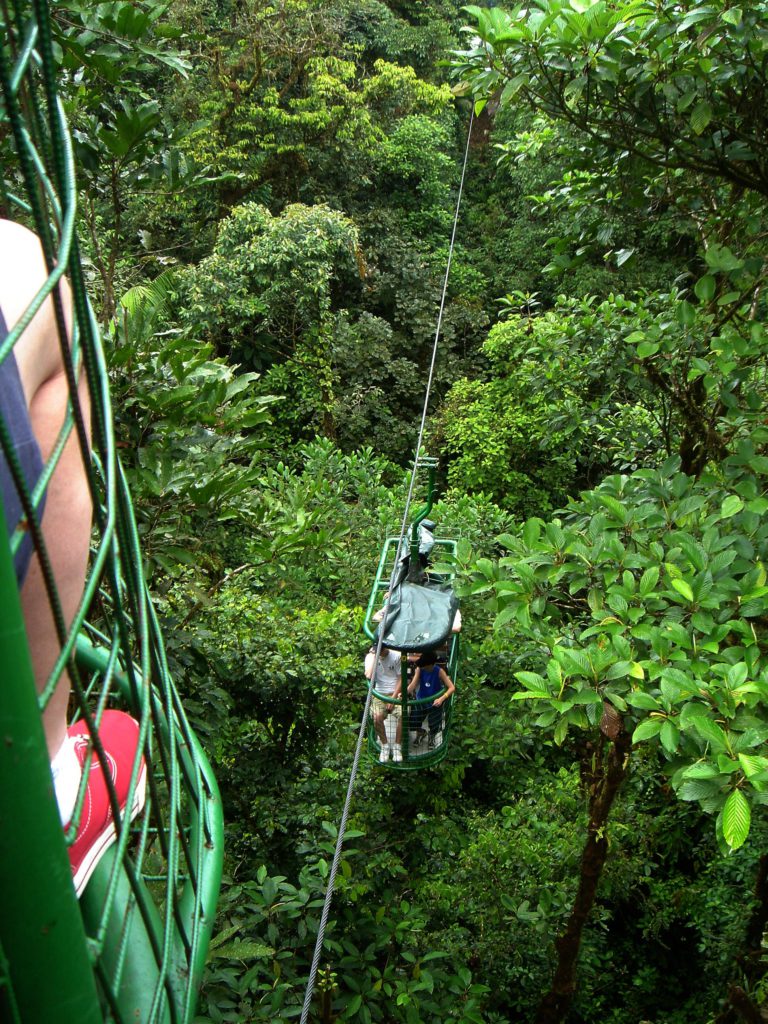
Although the views – and height and length — of the ride couldn’t compare with the one in Cairns, Australia (although they brashly claimed this was the greatest in the world) it was really nice having a naturalist along to point out the diverse elements of the ecosystem.
The journey out was made nearly on the forest floor, and the return tip in the canopy. We spotted a family of Coati (similar to raccoons) crossing the forest floor, but saw little other wildlife, since it’s mostly nocturnal. We learned a lot about the flora, though. Although this is the dry season, about halfway through our journey a slight drizzle began, not enough to really get us wet, but the perfect atmosphere for a rainforest that gets more than 300 inches of rain a year.
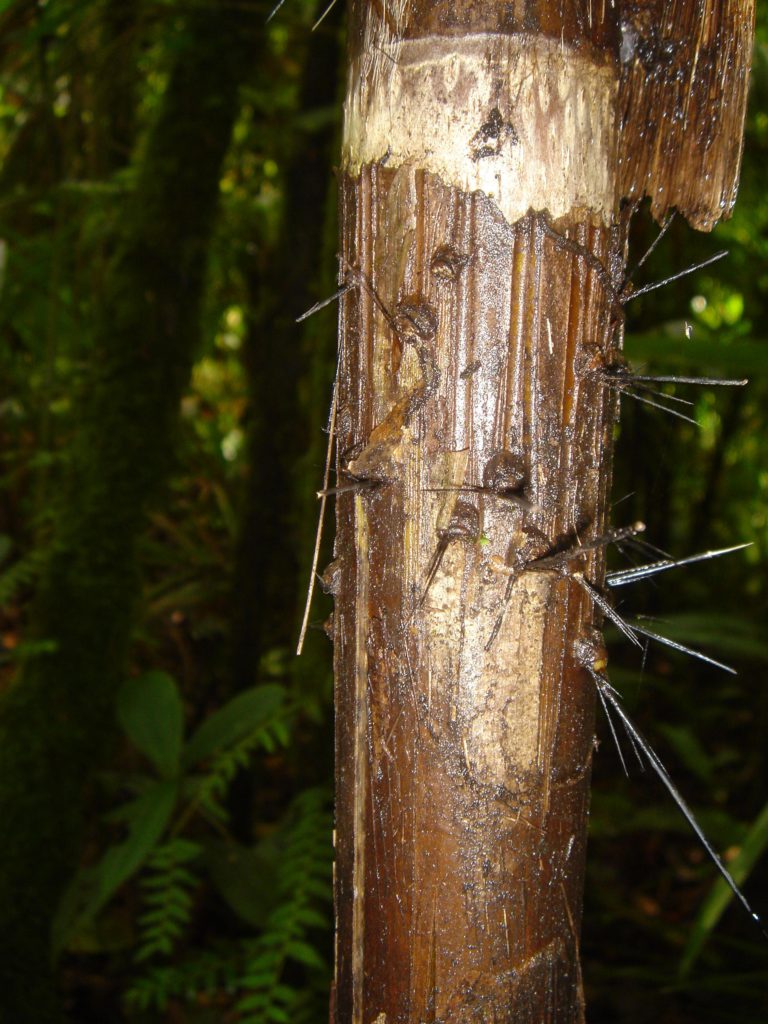
After the tram ride another naturalist took us on a nature walk, where we saw leaf-cutter ants demolishing the forest in most impressive fashion. There was also a sloth, a bat sleeping on the underside of a leaf it had folded in two, and a deadly eyelash viper. Gulp. We also saw a palm which is the source of poison darts. A single poison dart frog can equip up to 60 of these needle-sharp splinters with a fatal dose of poison.
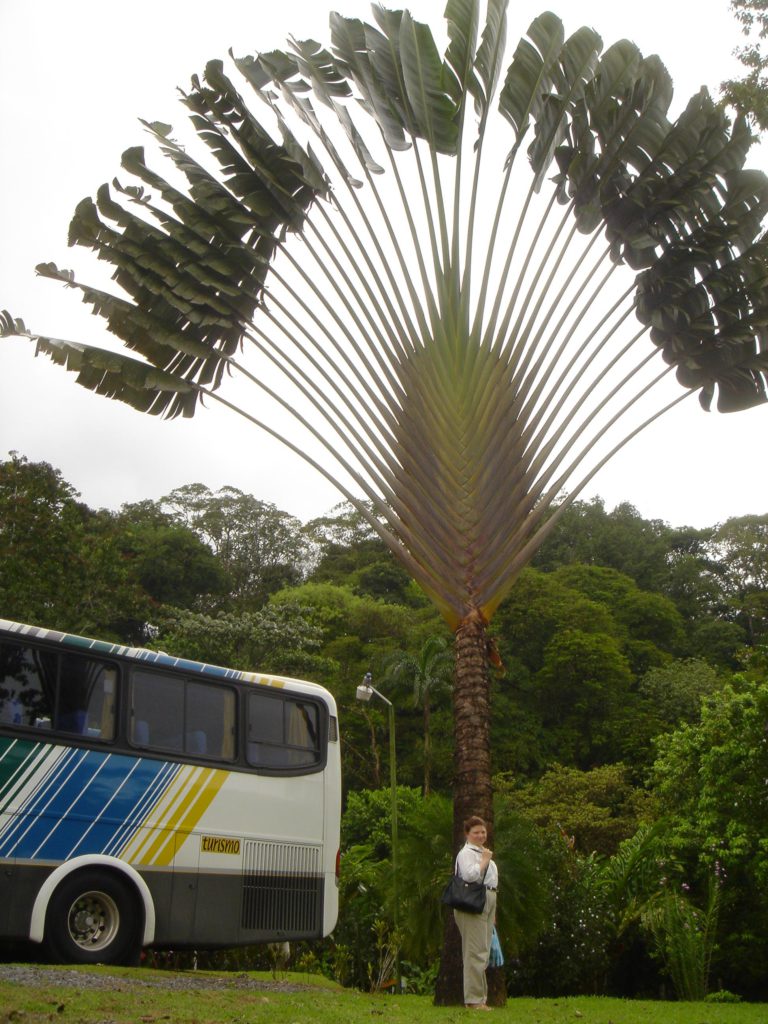
Leaving the rainforest, we stopped for lunch at Restaurante Rio Danta, where we had a delicious lunch of. . . rice and beans. We liked their hot sauce, a complex, curry concoction, so much we bought three bottles.
Almost back to Limón, we made an unscheduled stop at a banana plantation where Porfiro showed us how this plant — technically the world’s largest herb — is cultivated.
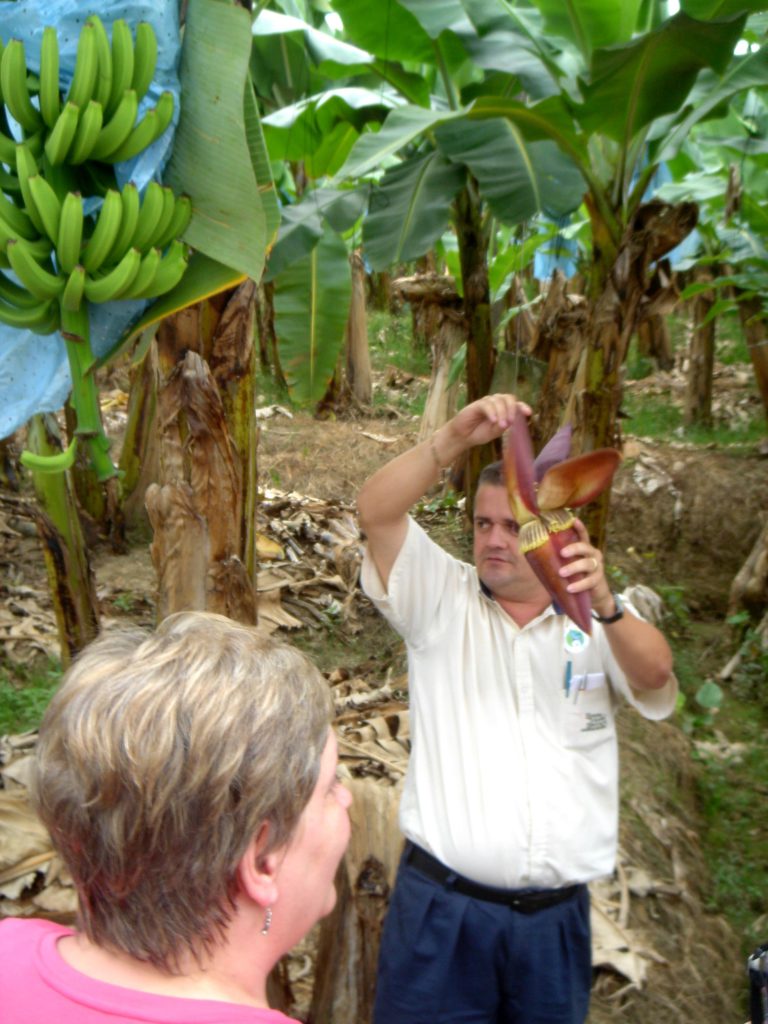
The plant grows where the previous one is chopped off. There are always two left from the same base; one is producing fruit, the smaller is its replacement. After nine months of leaf growing a blossom forms. As it opens teeny bananas are revealed. As they grow they turn upward to the sun. The lower ones are pruned off, except one (examine the photo closely) that signals the plant not to grow more levels. This leaves about 80 bananas on the stalk. It’s sealed in a perforated plastic bag for six weeks, then harvested, and the plant is cut off at the base. A new one sprouts almost immediately.
We arrived back at the ship at five, and by six, lovely Costa Rica was fading in the distance.
Panama Canal
Tuesday, March 22, 2005
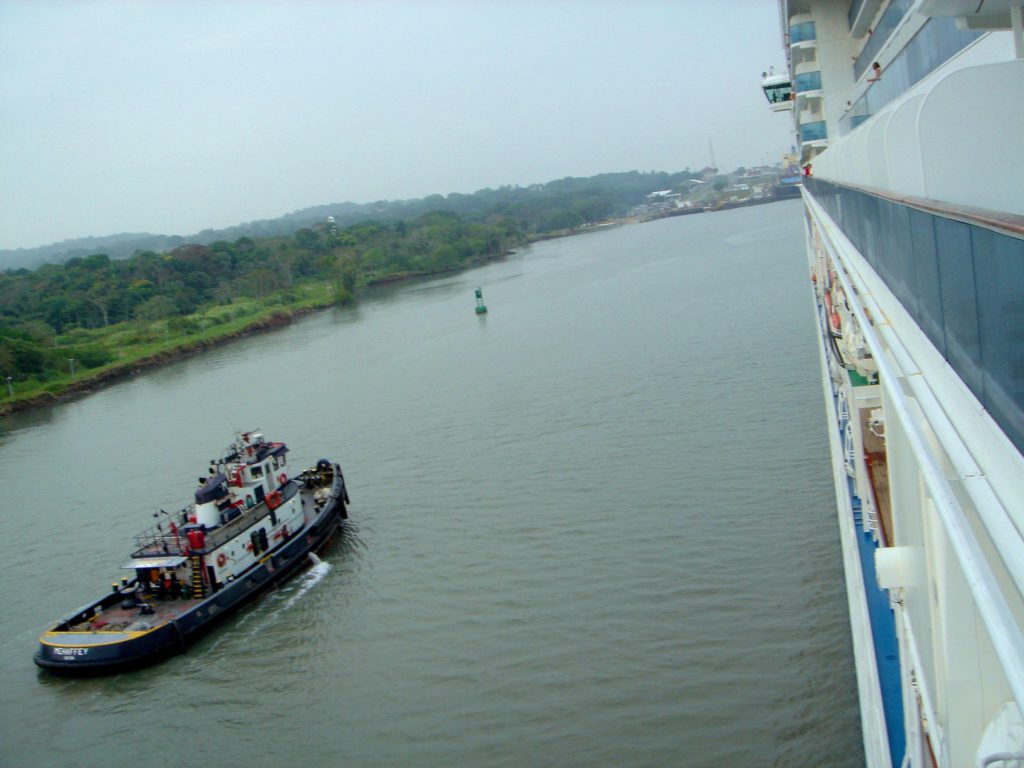
Today at dawn we entered the Panama Canal and passed through the three locks that elevate the ship 75 feet to the level of Gatun Lake. The canal is 50 miles long, and shaves 7800 miles off the trip from New York to San Francisco.
Excavation was begun by the French in the late 1800s, but abandoned after two attempts and the loss of 22,000 workers, mostly to malaria. The United States took over — literally — by backing a coup to create the country of Panama out of a chunk of Colombia, and completed the canal in 1914.
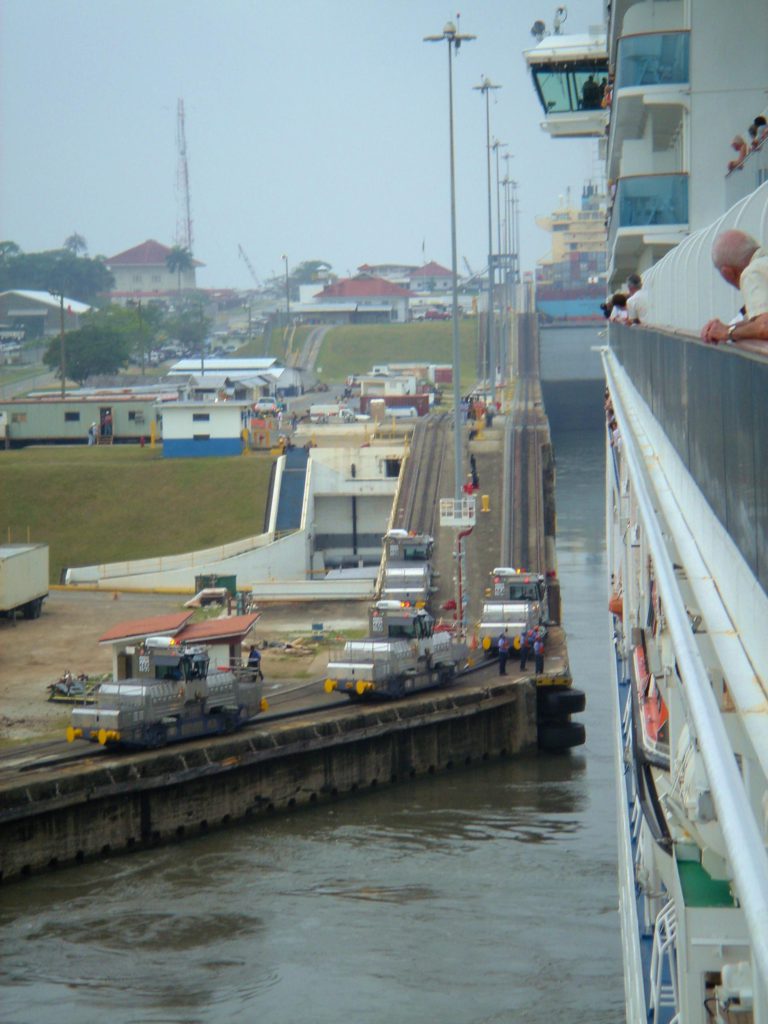
By design, our ship barely fits into the canal, with only a few feet to spare. The toll for freighters is based upon the ship’s displacement weight, ballast and load. (Heavier ships take longer in the locks, because there is less space for the water to flow past, which slows their passage. Cruise ships pay based upon capacity. This ship pays $226,000! (The lowest toll ever was 36 cents. Someone swam the canal in 1928. )
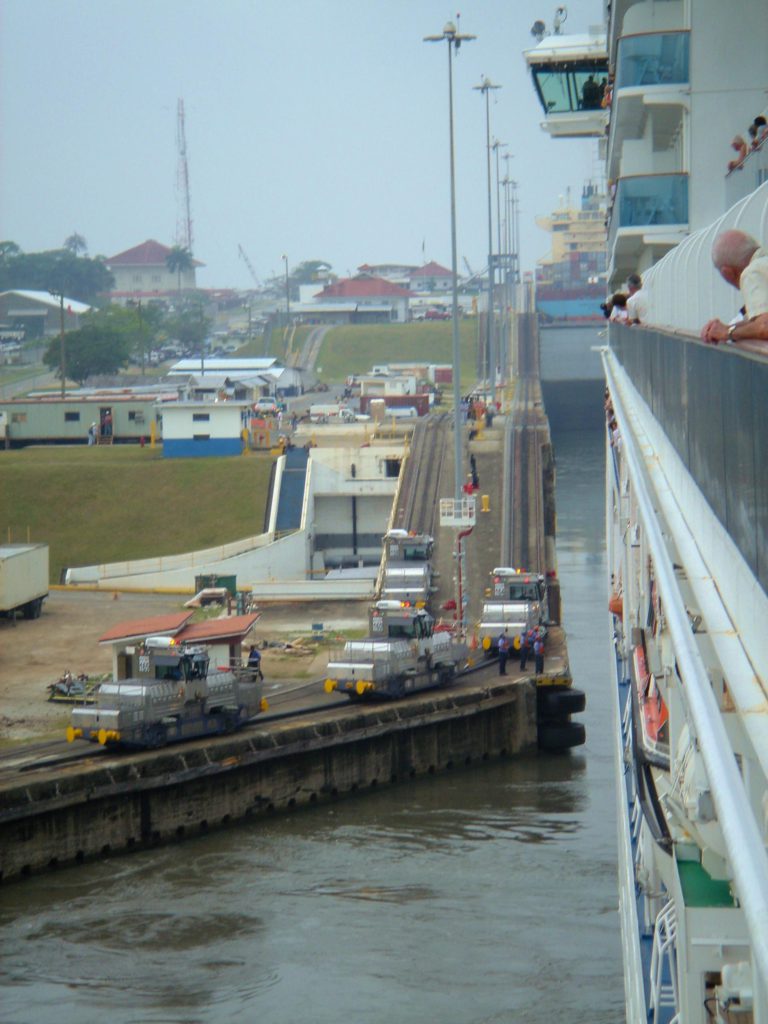
A special room service Champagne breakfast was served on our balcony, and Dani, who feels much better, joined us for the passage. It was a lot hotter than our Champagne breakfast at Glacier Bay!
After passing through the locks we spent the day cruising Gatun Lake. Some passengers tendered off for shore excursions, but we spent the day relaxing onboard.
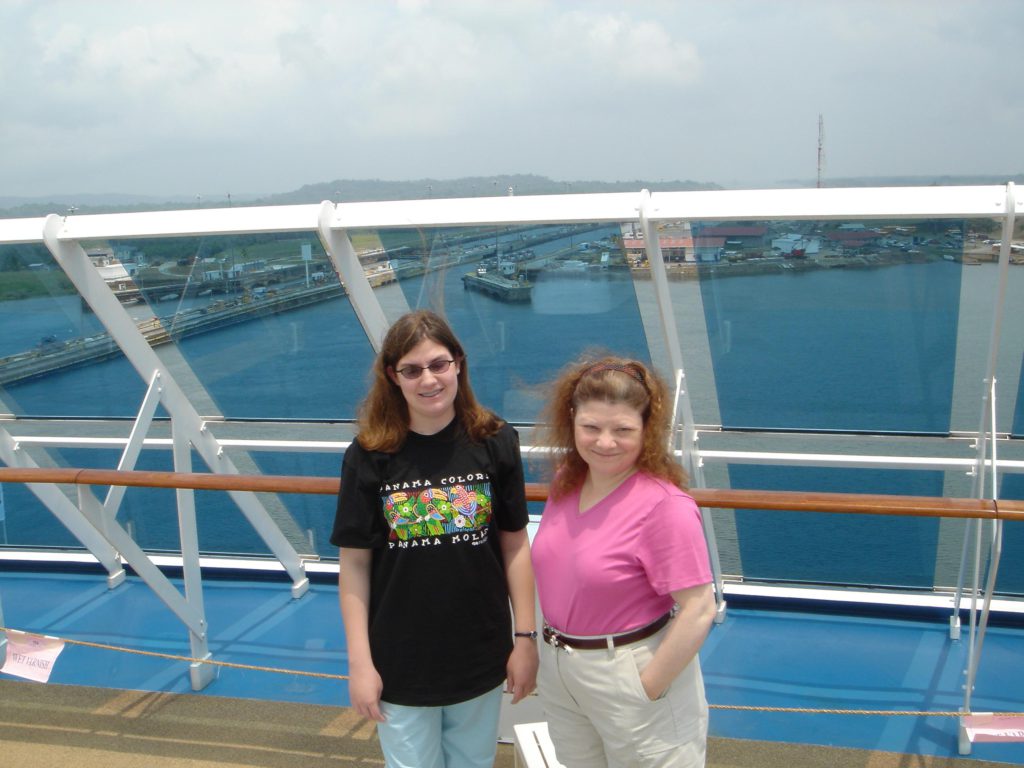
At noon the ship passed back through the Gatun Locks. I photographed the process from deck 15 forward. It’s amazing how fast the locks fill. The water in the 100,000 square foot chamber drops several inches per second at the beginning of the process. That’s a lot of water.
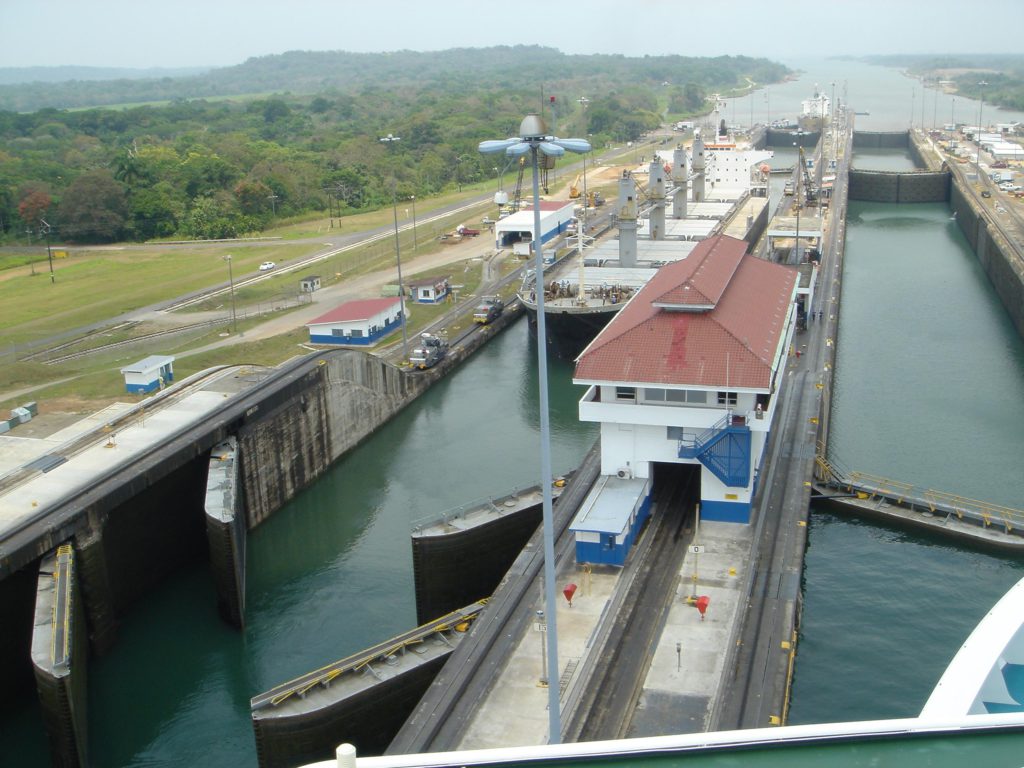
As we entered the final lock we decided to go down to the dining room for lunch. This proved to be a lucky decision, as the view from the atrium was truly bizarre. Somehow it hadn’t occurred to us that the lower decks were surrounded by concrete walls, just inches from the hull. The sight of that concrete sliding silently past, interrupted by the 50 foot steel gates with their riveted surface was like a scene from Myst.
In the afternoon we docked at Cristobal to pick up those who’d gone on shore excursions. Linda and I spent a few minutes walking through the arts and crap booths on the pier and she bought a couple of hand-painted feathers as souvenirs. One of the booths was staffed by members of a local tribe selling their baskets. The juxtaposition of bare- breasted, heavily tattooed natives and dowdy American tourists was quite amusing.
We set sail again at dusk, passing a mile-long line of ships — mostly freighters — their running lights glowing in the misty darkness, waiting for their turn to pass through the locks.
At Sea
Wednesday, March 23, 2005
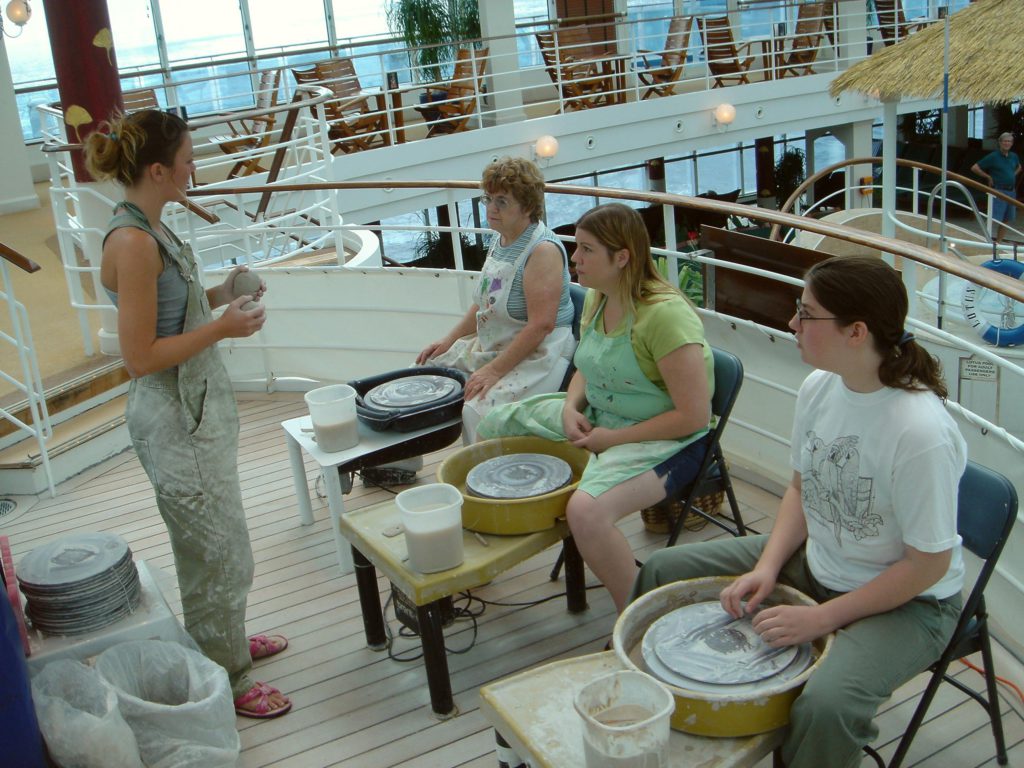
In the morning Dani had a pottery lesson up on deck 15. We originally became interested in pottery and ceramics because of our first trip on this ship, two years ago, which led to us getting our own kiln and wheel. We’ve gotten a lot of use out of the kiln, but the wheel proved a challenge. Now, having had some additional instruction, I think we’ll have more luck with it.
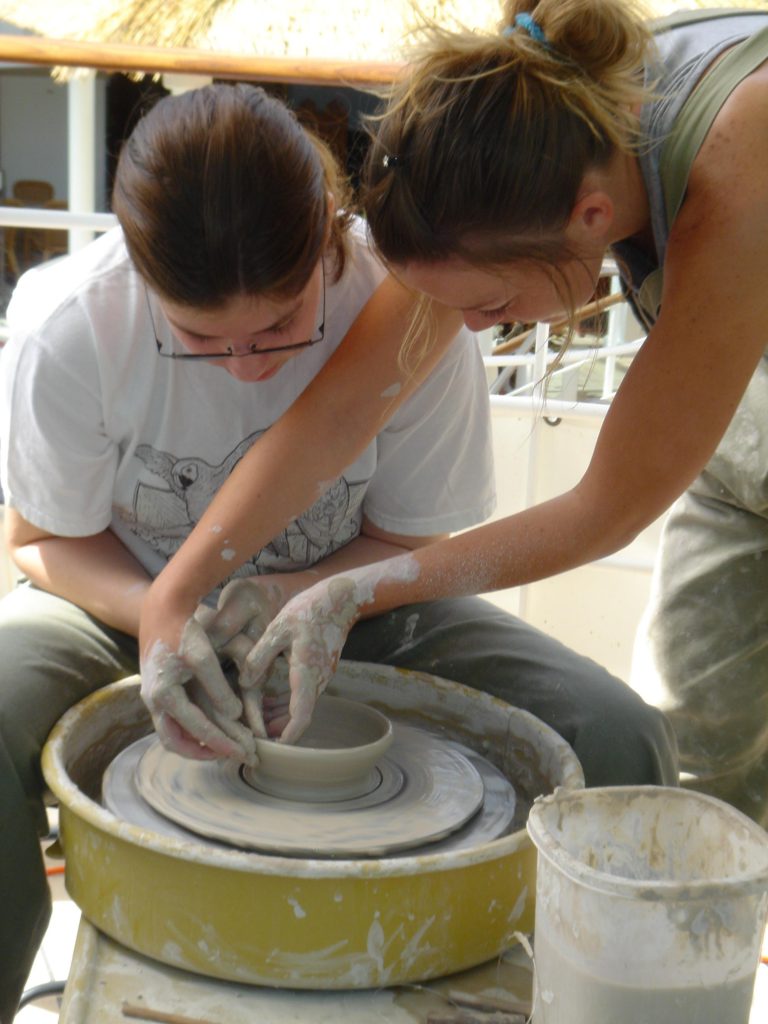
Ever been two a wine tasting and emerged a bit wobbly? Even before the afternoon “connoisseur’s” tasting at Sabatini there were seven-foot swells! Although the ship does a good job of minimizing the roll using active stabilizers, it can still be a challenge navigating the corridors. Especially after seven wines.
Dinner after dinner, the staff of the Bordeaux Dining Room has exceeded our expectations. The special attention lavished upon us by Head Waiters Godwin and Thomas, and the superlative attention and fun loving spirit of our waiter, Jorge, have been the highlight of the cruise. Princess seems to have upgraded their food, as well. Although some dishes are still middle-brow cruise food, the escargot I had the other night was the best I’ve ever tasted.
Grand Cayman
Thursday, March 24, 2005
After a hiatus following her soar throat, Dani’s cold has moved to her head. Unfortunately she didn’t feel well enough for the sting ray shore excursion. Linda accompanied me, only after being guaranteed she wouldn’t have to actually touch the water.
The Cayman Islands were devastated by last summer’s hurricane. 95% of the buildings were damaged, and we passed many blocks where nothing was left standing. They’re working hard to rebuild the dock area, and there is luxury hotel and condo construction everywhere. But it’s hard to imagine what it would be like on this island during even a ten-foot storm surge. It simply wouldn’t be here.
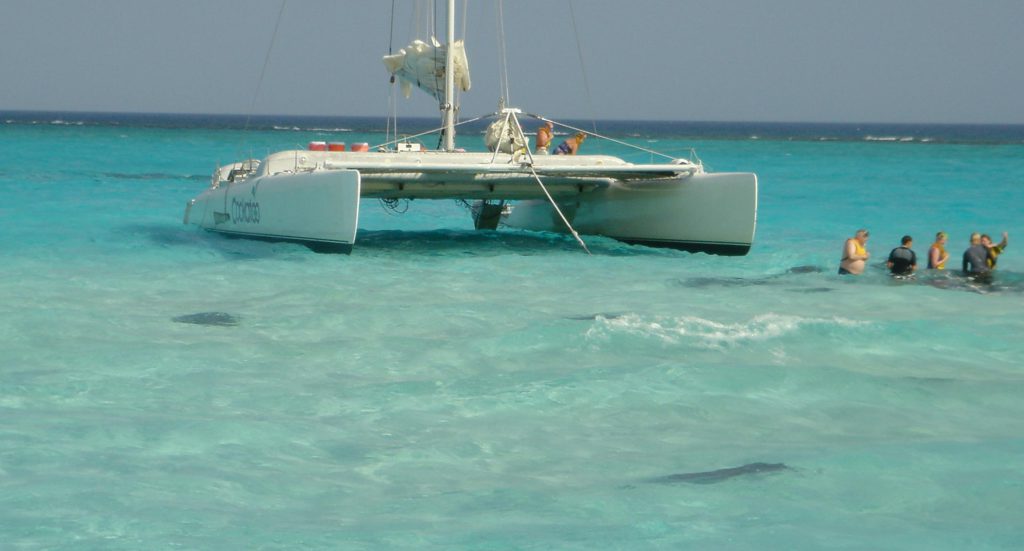
I must say it was even more fun than I expected. The rays swirled around us, nuzzling us occasionally like dogs begging for table scraps. Feeding them was a lot like stuffing squid into a vacuum cleaner. They feel quite silky, and are neither aggressive nor skittish.
As you can see, the bargain-priced underwater camera housing I got for my little Sony T1 digital camera worked great.
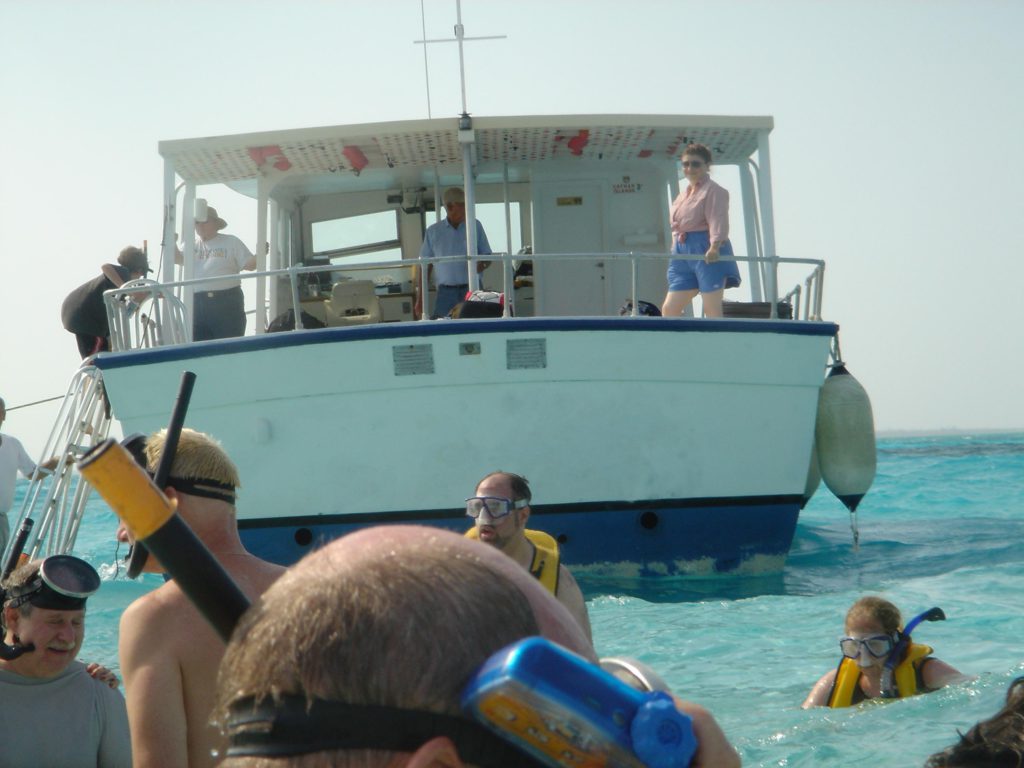
Our second stop, for snorkeling, was brief. There was a small amount of chop and a medium current. The combination proved too much for the large percentage of inexperienced snorkelers on the trip, and they called everyone back in after about ten minutes. It didn’t really matter, though. Although billed as the world’s second biggest reef, it was more of a sandy place with some fan coral. The sights couldn’t compare to Australia’s Great Barrier Reef.
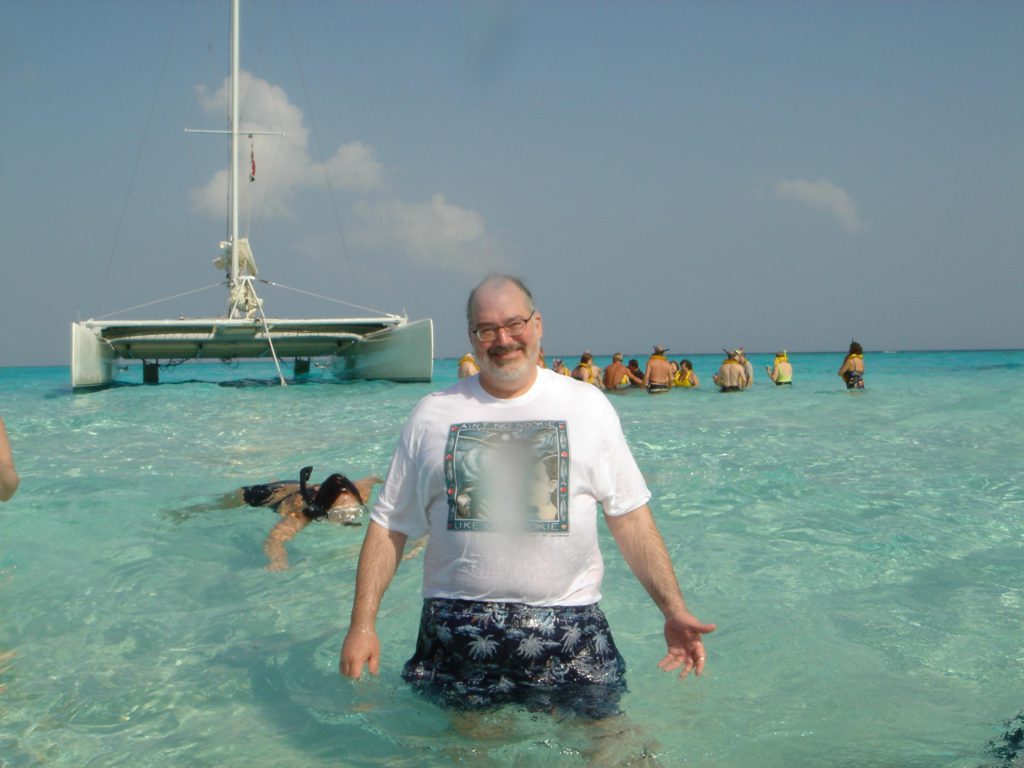
Cozumel, Mexico
Friday, March 25, 2005
Today is our 27th anniversary. We’ve never been on a cruise before during an anniversary or birthday. We got the traditional balloon outside the cabin door. Whoopee.
Linda woke with a bit of a sore throat, but she gamely went off with Dani to go horse-butt riding. I headed for my Atlantis submarine ride.
Cozumel was a tiny backwater until 1959 when Jacques Cousteau introduced the world to it’s beautiful diving condition. Now it’s a bustling, touristy resort city that has done an excellent job of keeping itself environmentally appealing. Even waiting for my tour I could see parrot fish nibbling the coral in the aquamarine water beneath the dock.
They put our tour group onto a procession of taxis (there are about a million of them in Cozumel) an we sped about 5 miles down the coast near the other cruise ship pier (there are at least four in port today) to the Atlantis office. This is a first class operation, with modern, split level building, waiting room and dock. A boat transported us about 20 minutes farther down the coast to the sub.
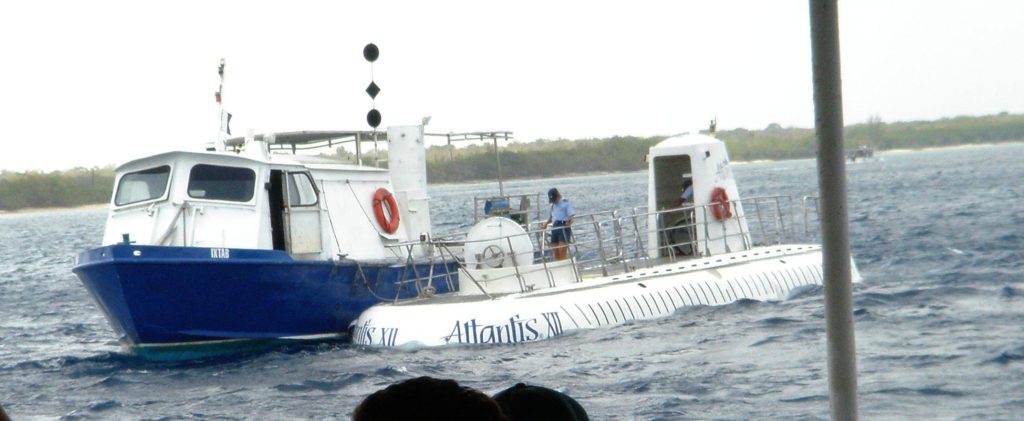
Atlantis is a true submarine, unlike the semi-subs I’ve been in before. It weighs 80 tons, carries 48 to a depth of up to 150 feet, and can stay underwater for 24 hours. Fortunately our trip was much shorter than that.
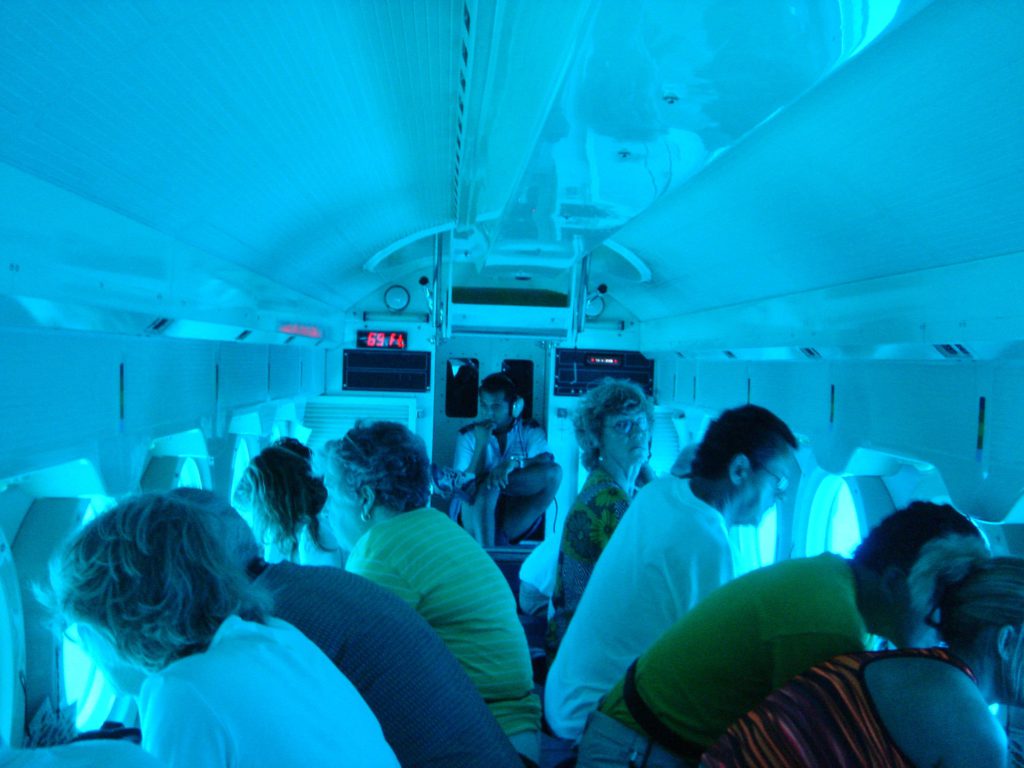
Onboard the operation continued to be quite professional, with the pilot’s chatter piper into the passenger area as he talked with the control ship topside. There was also a first mate and a tour guide, and all the comments were made in both English and. . . well, German.
We descended rapidly to about 70 feet and cruised the reef, spotting lots of smaller fish, one shark and a lobster. Because there is no red light below about ten feet, I have to honestly say that the sights from the semi sub are probably as good or better, but it was neat to be in a real submarine. At one point we passed a school of scuba divers, and it reminded me that a sub is no substitute for the real thing!
Our maximum depth was 135, at which point we dangled over the sharp edge of the the “wall”, where the continental shelf ends and the ocean floor suddenly drops 3000 feet. Fortunately, no leaks.
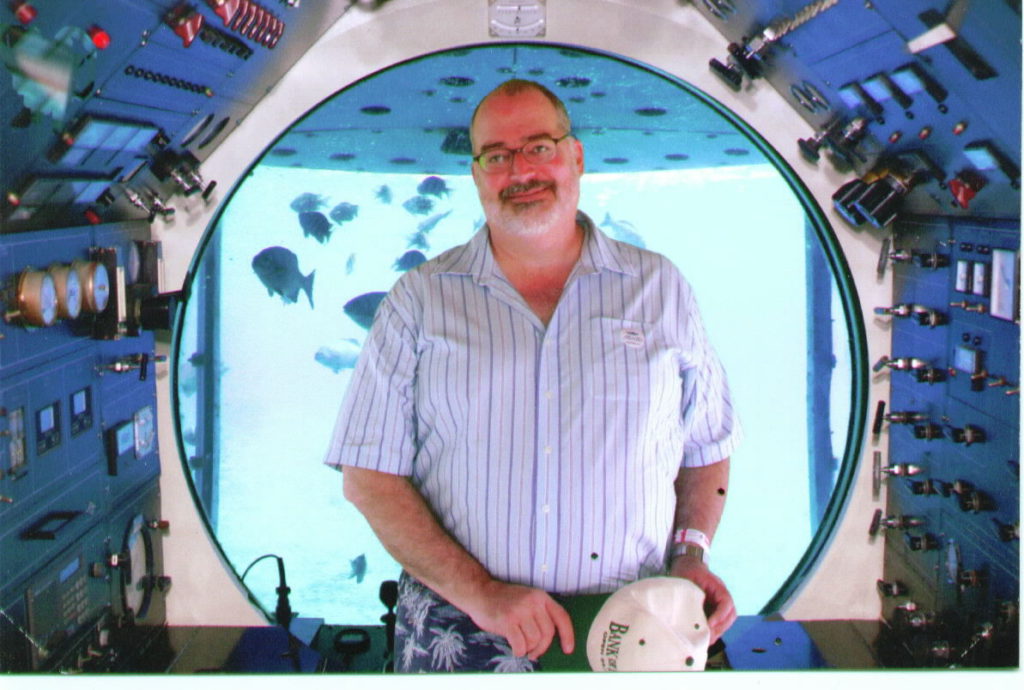
The return process began by blowing ballast and ended by hailing a taxi.
Meanwhile, Linda and Dani were in the countryside, where Dani was demonstrating that she’s an excellent horsewoman, and Linda was demonstrating that Dani is an excellent horsewoman. There were many iguanas on the trail, some up to several feet long. Surprisingly, the horses ignored them.
After Linda had a chance to hose off back at our cabin, she and I ventured out for an anniversary lunch. We had the name of a good restaurant, but we decided not to risk the logistics of finding a taxi back to the ship and instead went to Mis Charros, one of the tourist places along the waterfront.
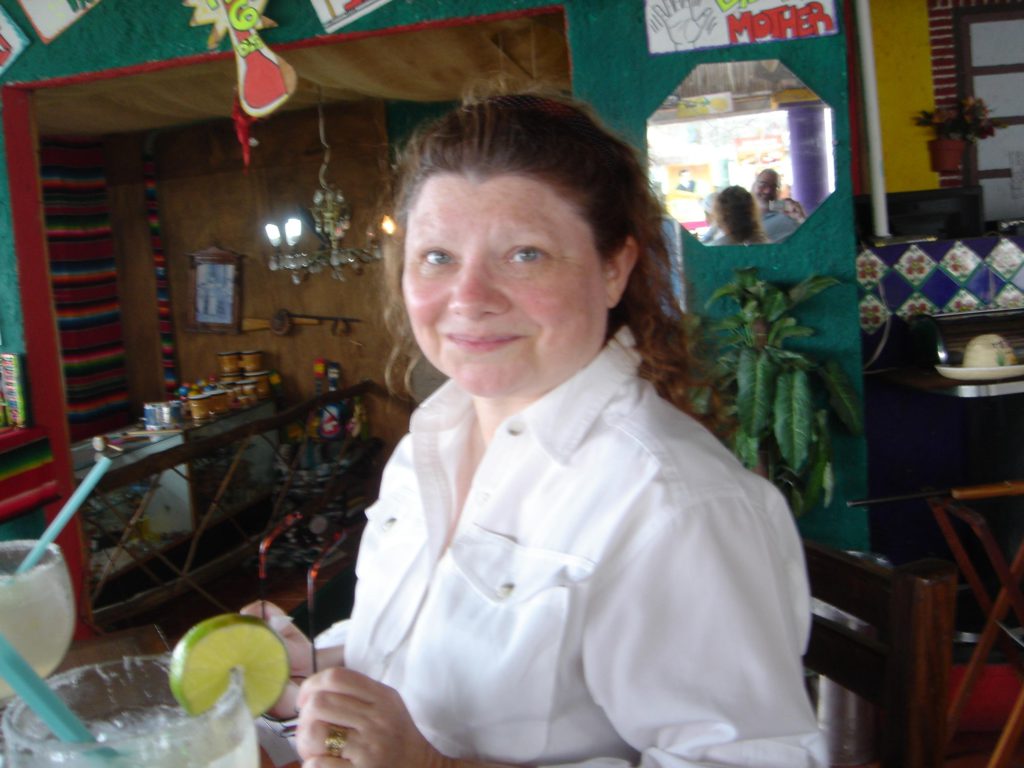
Mis Charros claims to be 100 years old, and there’s certainly plenty of evidence there hasn’t been any maintenance for at least that long. We had excellent magaritas, guacamole and chips, and mediocre everything else. at Epcot’s Mexico pavilion there is a scene on the boat ride where vendors race along beside the boat trying to sell you stuff. That’s what this restaurant was like, except we couldn’t escape in a boat.
After finishing her ceramic painting, Dani visited the ship’s doctor for some antibiotics to make sure she avoids her cold turning into bronchitis. She was impressed with the ship’s medical staff and facility. The prescriptions come from Ireland, so they are reasonably priced and the inserts are actually informative (i. e. not written by lawyers).
We received the sad new that our wonderful waiter, Jorge, lost his niece. He left the ship in Cozumel to fly home, and we won’t see him again. We’ll leave a thank you note and tip for him with his fiance.
Belize
Saturday, March 26, 2005
A popular T-shirt here reads, “Where the Hell is Belize?”
It’s between Mexico and Guatemala, and until independence from England in 1981 it was called British Honduras. It’s the smallest country in Central America, and the only English-speaking one. The capital, Belize City, has 70,000 residents, more than a fourth of the country.
Since Belize is a former British colony, it was surprising to find the cars driving on the right side of the street. Apparently they changed over, sometime in the early 1960s. That must have been an exciting week.
Even though Belize is a really interesting port, not many cruise ships visit yet, because of the logistics. We anchored seven-miles off shore, and the tendering was a VERY slow operation, so our tour was running an hour behind time. Because it involved water, Linda chickened out at the last minute. Just as well, as it turned out, because — although Dani and I loved it — she would have hated it.
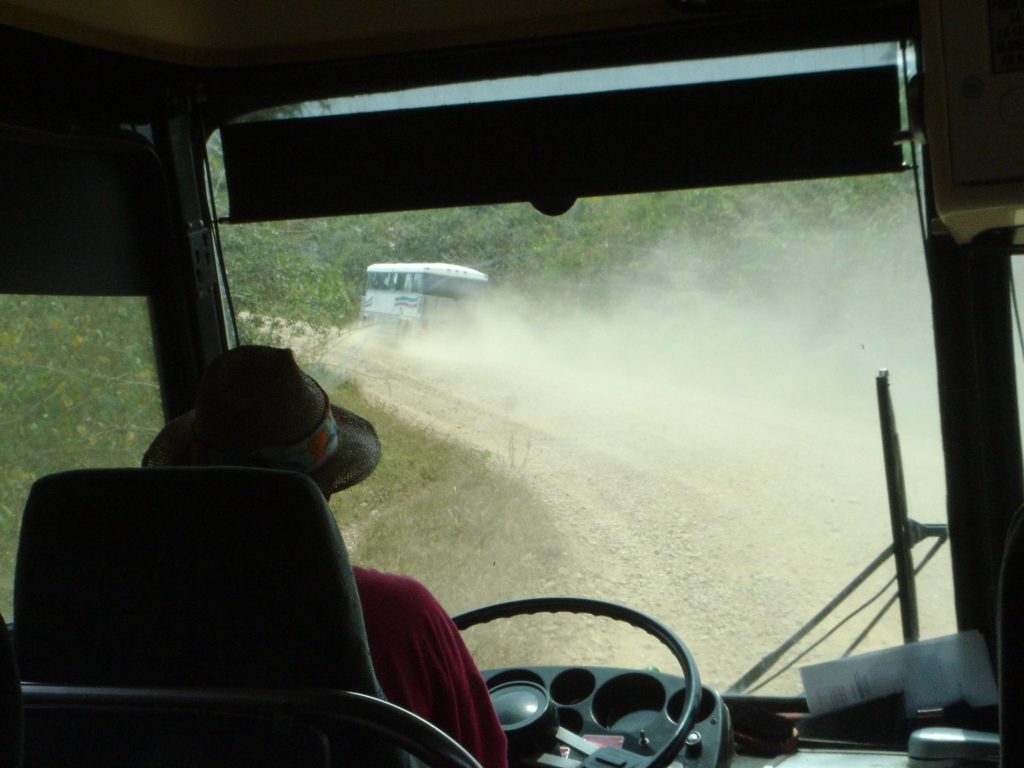
Our journey began with an hour bus ride through a surprisingly ramshackle town, then countryside consisting of mostly scrub brush. The final seven miles were unpaved road — very dusty unpaved road. This was definitely not tropical rainforest.
At the end of the road we hiked over a hill to a lodge were we were loaded up with inner tubes, life jackets and “head” lights. Then, laden with all this stuff, we made a forced march through the jungle for half an hour in 97 degree weather (this was not the highlight of the experience).
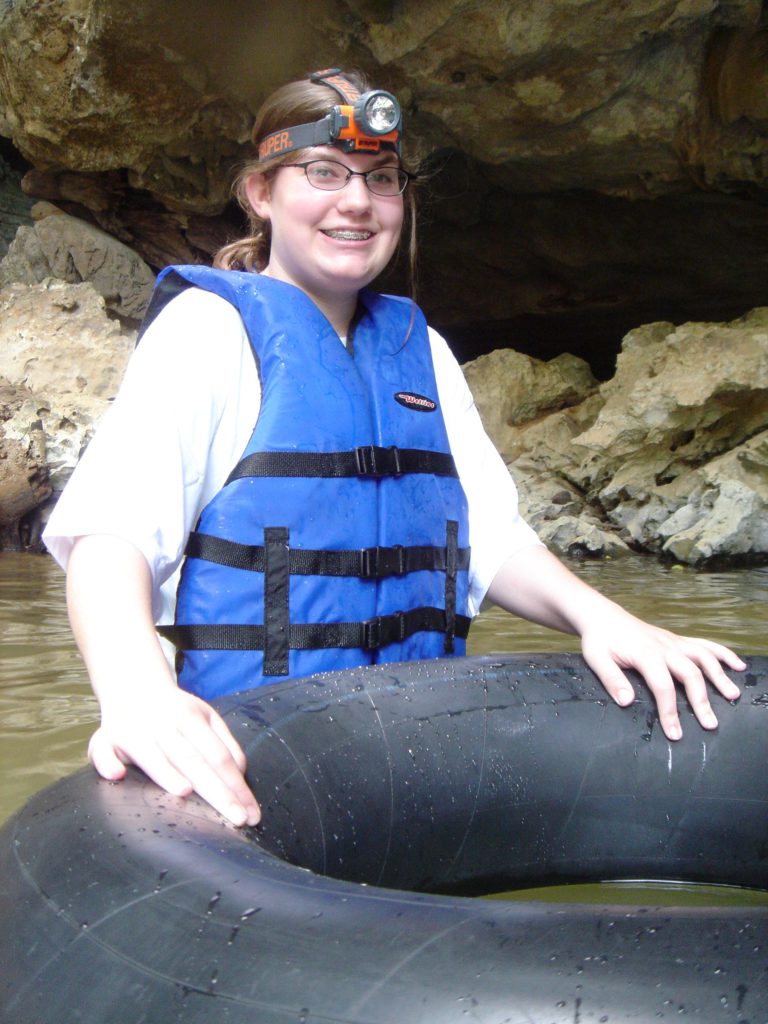
Few things in life have felt as good as plunging into the river at the end of that hike.
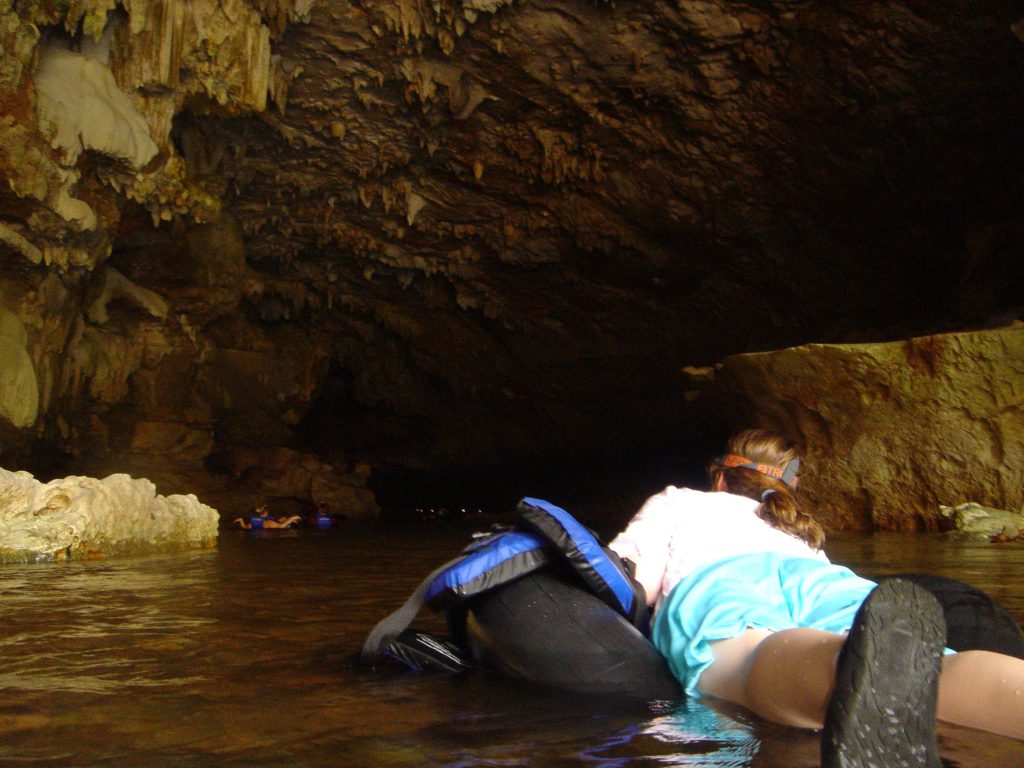
After our body temperatures had returned to two digits, we began our hour-long float through the cave. It was about twenty feet high in most places, and about fifty feet wide. After the first turn the darkness descended quickly, but we could see wherever we looked because of our head lights. Stalactites and other formations clung in curtains, mostly along the sides. Overhead were holes where bats hung, although we couldn’t really see them clearly. At places it was too shallow to float and we had to walk, but most of the time we chose to swim, as it was easier to maneuver. We would have liked a little more time to explore, but because of the lateness of our start we had to hurry.
At the end of our float we found ourselves back where we’d picked up our gear. The lodge served a delicious al fresco lunch of curried chicken breast, rice and beans with all the habanera sauce we could eat. The ice cold bottle of Coke tasted pretty good, too. Then it was time to retrace our steps back to the ship for an afternoon departure.
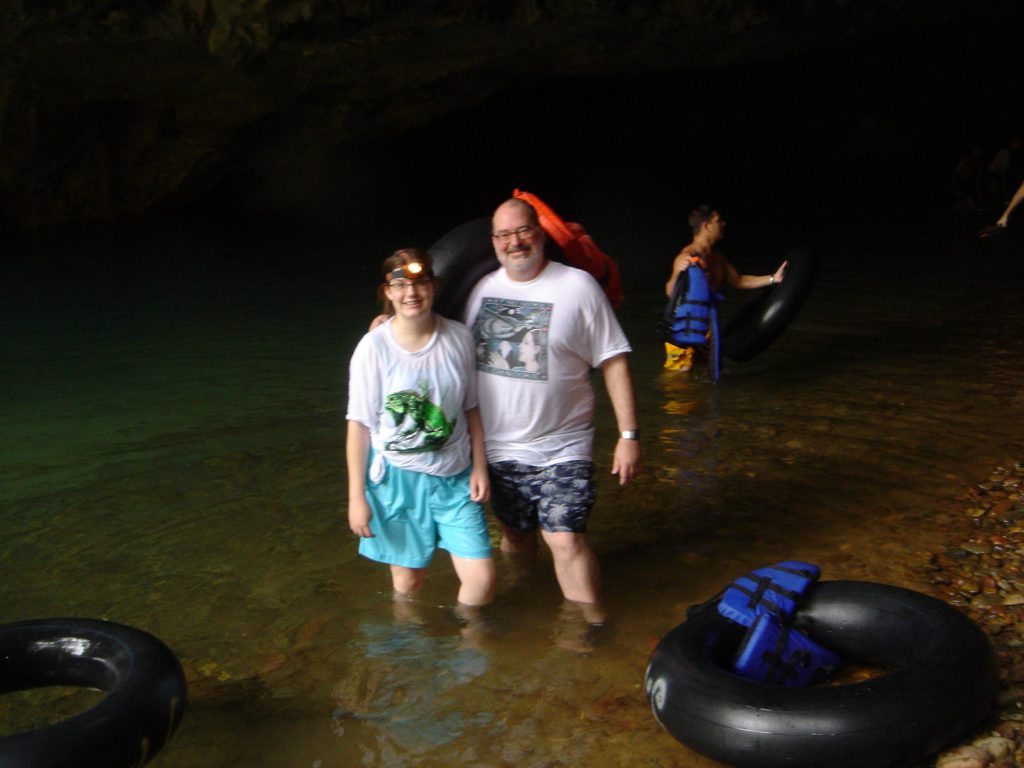
At Sea
Easter Sunday, March 27, 2005
Our first holiday at sea in ten cruises. They decorated the atrium with giant eggs.
I was reflecting on our past cruises:
- The Norway (formerly The France), US Virgin Islands
- Big Red Boat, Nassau
- Costa Victoria, Key West
- Voyager of the Seas, Jamaica
- Explorer of the Seas, San Juan
- Norwegian Dream, Baltic
- Coral Princess, Alaska
- Disney, Nassau
- Star Princess, Mediterranean
- Coral Princess, Panama Canal
This was certainly the best dining room experience we’ve had on any of them, and also the best Caribbean itinerary. The Baltic is still the one with the most interesting ports, Alaska had the best scenery, and the Mediterranean was the most educational. I’d enjoy a repeat of any of those, but you’d have to shoot me to get me on Costa again.
Ft. Lauderdale
Monday, March 28, 2005
It seems strange to be traveling home on a Monday. I had a nice breakfast in the dining room, my first chance to talk with some of the other passengers. There seemed to be as many different impressions of the cruise and the ship as there were passengers, from rapturous to grouchy. Perhaps we each bring our own expectations with us, wherever we travel.
Linda, Dani and I relaxed in the Universe lounge until 9:30, when our disembarkation color was called and we easily collected out baggage, cleared customs, ransomed our car from the garage and headed home.
Things to remember for next time
A starboard cabin would be better in every single port. I was pretty sure this would be the case (come to think of it, that almost always seems to be) but had no choice.
The Coral Princess remains our favorite ship, because of the uncrowded feel to its public spaces and its superb dining staff.
Next time I’ll approach the head waiter in the open seating dining room before dinner on the first night, and see if I can reserve a table with “the best waiter” for 8pm throughout the cruise.
